BABSON



















































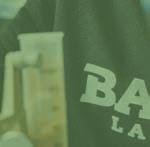


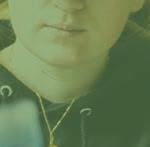




What Happens in the Classroom





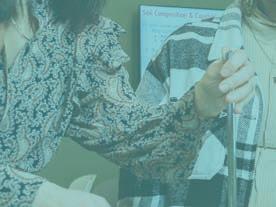
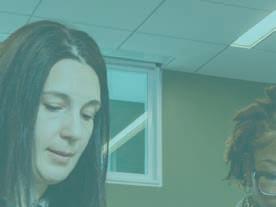











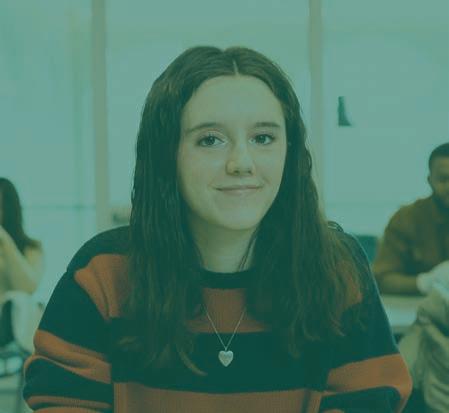










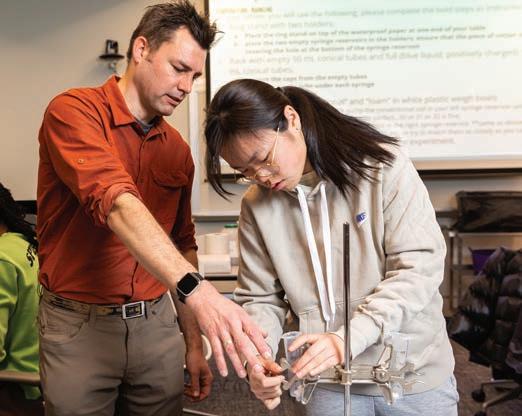
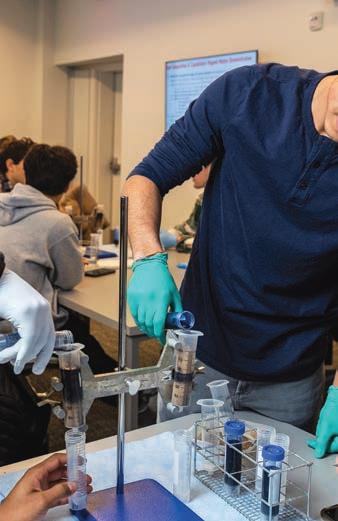
SPRING 2023
MAGAZINE PEOPLE OF BABSON / 9 ‘MORE THAN HOCKEY’ / 22 PAYING IT FORWARD / 28 NEWS, NOTES, AND NODS / 32 PAGE 10
Problems rarely are con ned—not by time or space, not by geography or demographics. Some are simple, some are complex, and many haven’t yet been identi ed. They can appear anywhere and extend everywhere. The worst of them can persist for decades or longer.
Solving the world’s problems requires driven teams considering every perspective. It requires people from diverse backgrounds and experiences working together, collaborating with new ways of thinking and new approaches. It requires the understanding of risk and return. It requires entrepreneurial leadership. Fortunately, entrepreneurial leadership also spans all boundaries. It applies to every eld, spans every aspect of business and society, and is necessary in every company, organization, and institution. So, the training needed to develop the entrepreneurial leaders of the future also can’t be constrained, especially by subject or discipline.
A collaborative, cross-disciplinary approach is not new for Babson. As the world’s best school for entrepreneurship, Babson has

excelled at creating a holistic approach to problem solving. As Sebastian Fixson—our Marla M. Capozzi MBA’96 Term Chair in Design Thinking, Innovation and Entrepreneurship— says, it “is part of our DNA.”
In this issue of Babson Magazine, we examine how our world-renowned faculty collaborate across academic divisions to shape the entrepreneurial leaders of the future—both in the undergraduate and graduate schools. In particular, we explore how learning in a transdisciplinary classroom shapes problem solving at the intersections of disciplines with a focus on the Socio-Ecological Systems course, which is now a requirement for undergraduates (Page 10). We also take a look at BETA-X, an MBA program that makes connections among eight classes across disciplines, as well as how our world-class centers and institutes support classroom learning with additional resources and expertise.
Also, in this issue, we spotlight another example of teamwork, particularly the unique bonds that have formed with the arrival of Jake Thibeault ’26, whose inspirational journey has had a profound impact on the men’s ice hockey team (Page 22).
As our classroom approach illustrates and Jake’s story underscores, Babson is a special place where people build immensely rewarding relationships—both personally and professionally—and ultimately are equipped to lead and solve problems big and small.
 PhD
PhD
FROM THEPRESIDENT
Stephen Spinelli Jr. MBA’92,
STRATEGY Danielle Perry
MANAGEMENT Cheryl Robock
ART DIRECTION Cathy Cahill SENIOR JOURNALISTS Hillary Chabot, John Crawford CONTRIBUTORS Kara Baskin, James Kiley, Marissa Langdon, Bryan Lipiner, Francis Ma, Nora Magdol, Erin O’Donnell, Thecla Ree, Mali Reimer, Wendy Schoenfeld
MULTIMEDIA TEAM Christopher Brown, Paul DeWolf, Maggie McGinnis, Adam Pearlman
10 The Babson Classroom Today Collaborative, interdisciplinary learning for the future.
22 ‘More than Hockey’
Jake Thibeault ’26 and the power of brotherly bonds.

28 Paying It Forward
Why alumni are motivated to contribute annually.
DEPARTMENTS
2
8 Office Hours Leslie Garbarino taps into enthusiasm for sports.
9 People of Babson Jerry Epps on the importance of supplier diversity.

20
32 News, Notes, and Nods Undergraduate, Graduate, Connections, In Memoriam
40 Entrepreneurial Leadership in Action
Ela Gokcigdem ’24 is making a global impact.
Babson Magazine (USPS 898-140) is published by Babson College, 231 Forest Street, Babson Park, MA 02457-0310, three times a year, in the spring, summer, and winter. Copyright 2023 by Babson College. Editorial office: Babson Park, MA 02457-0310. Send address corrections to advancement_services@babson.edu, or call +781-239-4044. BABSON MAGAZINE STAFF / Vol. 90, No. 1 EDITOR
COMMUNICATIONS
Eric Beato PUBLISHER Kerry Salerno, chief marketing officer
CREATIVE
CREATIVE
Find out more about what’s happening
welcome
feedback on the magazine. Contact
Beato
On the cover: Photos by Jake Belcher TABLE OF CONTENTS 22 9 SPRING 2023 / BABSON MAGAZINE 1
at Babson College at: entrepreneurship.babson.edu We
your
Eric
at ebeato@babson.edu
FEATURES
Babson and Beyond The latest news and updates from campus.
Babson’s Centers and Institutes How they support students and the community.
BABSON AND BE Y OND

JUSTIN KNIGHT 2 BABSON MAGAZINE / SPRING 2023
PHOTO:
New Partnership with Frank & Eileen EMPOWERS WOMEN ENTREPRENEURS
Babson College made a big impression on Audrey McLoghlin, even before the founder and CEO of the clothing brand Frank & Eileen™ decided that Babson was the perfect place to invest in and empower women entrepreneurs.
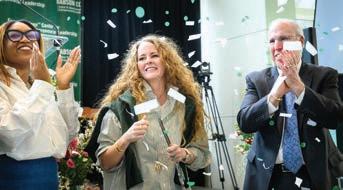

McLoghlin’s rst job out of college was at an MIT startup in Boston, and during that time she met someone working on his MBA at Babson. “He told me the college was ranked number one in entrepreneurship in the country, and my mind was just blown. I remember thinking, ‘How can I be a part of that?’ ” McLoghlin said.
“It took me 22 years to get into Babson,” she joked. “It’s going to be so
hard to get rid of me.”
McLoghlin capped a packed, three-day visit to Babson’s Wellesley campus on International Women’s Day, joining Babson President Stephen Spinelli Jr. MBA’92, PhD, at the of cial naming ceremony of the Frank & Eileen™ Center for Women’s Entrepreneurial Leadership (F&E CWEL) at the Arthur M. Blank Center for Entrepreneurship.
“Today, we honor and celebrate the commitment that Audrey McLoghlin has made to the future generation of women, and we welcome her into our community of entrepreneurial leaders here at Babson College,” Spinelli said. “We are grateful to have Audrey as a partner.”
Read more: bab.sn/FrankEileenCWEL PHOTOS: JUSTIN KNIGHT
Read more: bab.sn/FrankEileenCWEL SPRING 2023 / BABSON MAGAZINE 3
RAISING THE ROOF


Babson’s Turkish Community Unites After Earthquake
Babson’s Turkish community watched recovery efforts from thousands of miles away, rattled yet resolved to help their country rebuild in the shaky aftermath of the earthquake and aftershocks that caused so much death and destruction in February in southeastern Turkey and northern Syria.
Enes Karakullukcu ’25 and other Turkish students—the 10th-largest representation of any country at the College—quickly mobilized and began collecting donations, as well as
blankets, coats, and sleeping bags.
“We raised $8,000 in one day,” Karakullukcu said. “I’m heartbroken. This is the most catastrophic event that’s hit my country for a long time.”
to provide unity and comfort during the ongoing disaster.
“I have to give kudos to our Turkish students. They really rose to the occasion,” said Professor Sinan Erzurumlu, who is also from Turkey and appreciated being able to assist Babson’s Turkish students. “I think it’s different when you come together with fellow citizens. You start taking action and encouraging each other, and seeing that really gives me pride.”
Association
Sensing the deep alarm and desire to help, Karakullukcu worked with friends to set up an Instagram account to funnel donations to the right organizations, such as AKUT, a nongovernmental association of expert volunteers. They then moved to create the
— Hillary Chabot
PHOTOS: JON ENDOW
Babson Turkish Student
4 BABSON MAGAZINE / SPRING 2023 BABSON ANDBEYOND
The women’s basketball team brought Babson fans to their feet in March with a spirited run to the sectional finals of the NCAA Division III tournament. The Beavers—led by Megan Bauman ’23 and Samantha Smith ’23—played host to four games at Staake Gymnasium, the first NCAA tournament home games in 30 years. After dispatching Maine Maritime and New Paltz, Babson returned to Staake and defeated Marietta, 73-59, in the Sweet 16 before bowing to Rhode Island College. It was the Beavers’ third trip to the sectional finals (also 2010, 2011) under legendary coach Judy Blinstrub. Bauman (right) also joined Nicole Wurdeman ’12 as the only two players in school history to collect All-America accolades in three consecutive seasons.
GLOBAL HEALTH INNOVATION LAB COURSE: Students work to improve health care in Rwanda
When she thinks about her home of Rwanda, a small country filled with mountains and beauty but also a tragic history, Babson student Peace Ishimwe ’25 thinks about its people. “It is the love I see in the people,” she says. “Everyone takes care of their neighbors.”
The genocide of 1994 may have devastated the country, with some 800,000 people losing their lives, but Rwanda today is a tight-knit place with a strong economy. “For the country to be where it is today,” Ishimwe said, “people had to come together.”
Ishimwe is one of 10 Babson students who are participating in the Global Health Innovation Lab, a flagship course of the College’s Kerry Murphy Healey Center for Health Innovation and Entrepreneurship. As part of the course, students took a nine-day trip to Rwanda in January, and they are spending this semester working on health projects with students from the country’s University of Global Health Equity (UGHE).
Those projects cover a range of health issues— tracking rabies, improving hospital transfers, disseminating pregnancy information, enhancing communication for deaf patients—and are meant to leave a lasting impact on Rwanda’s people. Ishimwe is grateful for the students’ efforts.
“For Babson and UGHE to partner, it is an amazing
thing to see. It is an outstanding program,” she said. “I am so proud of my teammates who are working on these projects. They are doing amazing things in Rwanda.”
Babson students learn by doing in the innovation lab, which is led by Wiljeana Glover, the Healey Center’s founding faculty director and the Stephen C. and Carmella R. Kletjian Foundation Distinguished Professor of Global Healthcare Entrepreneurship.
“It is a way for us to engage them with experiential learning,” Glover says. “It has become the primary place
where students not only learn about health innovation and entrepreneurship but also experience it.”
Babson students spend the semester collaborating, and problem solving across continents with their UGHE counterparts. “I hope that they take away the importance of collaboration, the value of trying new things, and that it is possible to make progress even with problems people feel are intractable,” Glover says. “They can make a difference in a short amount of time.” —

PUPPY POP-UP: Marketing with Pooch Power
Something was afoot at Babson. The paw prints, written in chalk on the ground, led to the Donald W. Reynolds Campus Center, where visitors were confronted with an onslaught of cuteness, playfulness, and fur.
The occasion was a pop-up event, or, more accurately, a pup-up event. Five cream-colored golden retriever puppies—Rozy, Lucy, Ziva, Bailey, and Millie— were on hand for passers-by to pet, pat, and hold.
Babson Police Officer Kevin Carrigan made sure that Roger, Babson’s community resource dog, and Ronni, another service dog, were there as well.
That’s seven dogs in all, and so much pooch power drew a crowd of students. “I heard they were doing puppies today,” says Cristina Heilbron ’23, one of many huddled around the canines. “They’re adorable.”
Heilbron was well aware the puppies were coming because the event was well promoted, with fliers, Instagram posts, and the aforementioned paw prints. The puppy event, and all the marketing surrounding it, was the work of students in an intro to marketing class.
 John Crawford
John Crawford
All eight of the Principles of Marketing courses in the fall semester were charged with creating and promoting pop-up events across campus. Among other things, the pop-ups featured snow globe making, a Connect 4 tournament, a ramen restaurant, an escape room, and a time capsule.
Sandra Bravo MBA’87, associate professor of practice in marketing, hopes the exercise made students appreciate the importance of promotion and messaging. “Marketing makes a business successful. Lots of people have great ideas, but if you don’t know how to market them, you won’t get people to experience them,” says Bravo, whose class organized the puppy event. “I wanted them to know the power of what they can do. And, I wanted them to bring some joy to campus.”
BOTTOM PHOTO: MARK MANNE
SPRING 2023 / BABSON MAGAZINE 5
GEM DATA HACKATHON: Contagious entrepreneurship analysis takes top prize
It might not be as contagious as the common cold, but Kristin Wendell ’07, MSBA’23 found that people can “catch” the entrepreneurship bug and therefore increase job creation simply by being around other entrepreneurs.
Wendell, whose contagious entrepreneurship analysis won rst place in November at Babson College’s second annual GEM Data Hackathon, said she was inspired by an article in The Wall Street Journal that found that healthy living and exercise was as contagious among people living together as any virus.
“I was curious if entrepreneurship could also be ‘contagious,’ and if so, how did that relate to job creation? I found an impactful association between personally knowing an early-stage entrepreneur and every aspect of the job-creation cycle,” Wendell said. “Those connected to the early-stage entrepreneurial network are more likely to be entrepreneurs themselves; they generate more jobs and fund other entrepreneurs more frequently at a greater rate.”
Wendell’s analysis was one of many at the hackathon, a competition where Babson graduate and undergraduate students are encouraged to analyze data collected in the 2021–2022 U.S. Global
Entrepreneurship Monitor (GEM) report and unearth new facts.
The event, which preceded Babson’s Rocket Pitch event, kicked off the College’s annual Global Entrepreneurial Leadership Week. Wendell’s rst-place win included a $2,000 prize, while second-place winner Jackson Kuja ’25 won $1,000, and third-place winner Michael Twomey ’23 won $500. The theme of this year’s competition was job creation. “We chose that topic because we’ve been dealing with the great resignation and the fact that the hiring market can be so tough for

an entrepreneur,” said Andrew Corbett, Paul T. Babson Distinguished Professor of Entrepreneurial Studies.
The GEM Data Hackathon is an initiative launched in 2021 by the Butler Institute for Free Enterprise Through Entrepreneurship under the leadership of Corbett and Smaiyra Million P’21, executive director at the Arthur M. Blank Center for Entrepreneurship, and Mahdi Majbouri, associate professor of economics and faculty director for the MSBA program.
— Hillary Chabot
Report Recommends Action to Support Women Entrepreneurs
Women continue to make major strides in entrepreneurship but need more support from policymakers and program leaders, according to a new report from the Global Entrepreneurship Monitor (GEM).
The GEM 2021/2022 Women’s Entrepreneurship Report—authored by Amanda Elam, research fellow at the Diana International Research Institute at Babson College—illustrates the state of women’s
entrepreneurship two years after the onset of the COVID-19 pandemic. The report found that startup rates for women dropped by 15% from 2019 to 2020, but held constant in 2021.
“Women represent two out of every five earlystage entrepreneurs,” Elam said. “Entrepreneurship is a part of the economy where women are continuing to take an active role. It’s important for educators, leaders, and policymakers to understand the drivers
of gender differences in this critical market activity.”
The GEM report sheds light on the actions that policymakers and others should take to support women entrepreneurs, including the gender composition of high-potential startup populations, pandemic impacts on male and female entrepreneurs, and structural and environmental inequalities that need to be addressed on a policy level.
PHOTO: MARK MANNE
Kristin Wendell ’07, MSBA’23 (center) receives the first-place prize from Andrew Corbett (left) and Smaiyra Million P’21 at the second annual GEM Data Hackathon.
6 BABSON MAGAZINE / SPRING 2023 BABSON ANDBEYOND
CONNECTION, COURAGE NECESSARY to Defeat Systemic Racism in the Workplace
All it takes is a moment for anyone, from a new hire to a pivotal executive in leadership, to support and grow diversity, equity, and inclusion in the workplace, according to Dr. Tina Opie, an associate professor of management at Babson.
Even small actions such as voicing support for members of historically marginalized racial groups during a high-stakes meeting, or listening more than you speak if you are from a power-dominant racial group, can mean another step toward equity, Opie said.
“I think there are things that all of us can do and that everyone can work on to share sisterhood,” Opie said, referencing her book, Shared Sisterhood: How to Take
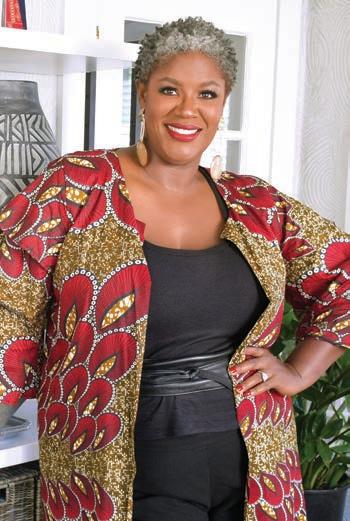
Collective Action for Racial and Gender Equity at Work
The book, named on Forbes’ list of 10 Best Business Books of 2022, comes as social movements such as #MeToo, Stop Asian Hate, and Black Lives Matter have highlighted ongoing systemic racism and discrimination throughout corporate America. Opie and co-author Dr. Beth Livingston, an associate professor of management at the University of Iowa’s business school, wrote the book to address and empower all individuals to eliminate
long-standing systemic inequities. Opie developed the idea for Shared Sisterhood over a decade ago and re ned the idea with Livingston, eventually writing the book virtually during the pandemic.
“It’s about looking around and saying, ‘How can I change the immediate environment in which I’m planted?’ Jump into the sun where you are,” Opie said, a nod toward one of her favorite quotes from revolutionary novelist Zora Neale Hurston. Opie also wanted to address another concern: Despite Black and white women sharing a common identity of being women, they rarely work together to x the inequities that women often face in the workplace. Research shows that the intersection of race and gender means that those inequities manifest in different ways for Black and white women. For example, while women experience a gender pay gap, Black women experience a much larger pay gap than their white women counterparts.
“I really feel that part of the reason why we can’t come together is because we’re talking past each other. We don’t understand each other,” Opie said.
“There’s a lack of connection and a lack of trust, not only throughout history but in contemporary times as well. So, the idea was, how can we redress that? How can we address that?” — Hillary Chabot
Babson Named Fulbright Top Producing Institution
Babson was named a Fulbright Top Producing Institution for U.S. Students by the U.S. Department of State’s Bureau of Educational and Cultural Affairs. The recognition is given to the U.S. colleges and universities with the highest number of applicants selected for the 2022–2023 Fulbright U.S. Student Program. This academic year, JerDrema (Dreme) Flynt M.Ed., MBA’22 was awarded a Fulbright grant, the first Babson graduate student to earn the prestigious prize and the 10th Babson recipient in the past 17 years. Flynt earned a U.S. Student Fulbright English Teaching Assistantship in South Africa.
Blank Center Receives Prestigious GCEC Award
The Arthur M. Blank Center for Entrepreneurship at Babson won the Nasdaq Center for Entrepreneurial Excellence Award at the Global Consortium of Entrepreneurship Centers (GCEC) Conference in Las Vegas. The award represents the highest honor that a university entrepreneurship center can receive. The Blank Center also won the prestigious award in 2002, becoming one of just a handful of entrepreneurship centers to earn the GCEC honor multiple times in the 23-year history of the award.
Babson Police Officers Honored for Community-Oriented Work
Babson police officers Kevin Carrigan and Nashley Gonzalez were honored by the Massachusetts Association of Campus Law Enforcement Administrators for community-oriented policing and innovation in policing. Carrigan and Gonzalez, two of the founding individuals of the Babson College Community Engagement Team in the Babson Public Safety Department, received the Sean Collier Award, named for the MIT police officer who was killed in the line of duty in the aftermath of the Boston Marathon bombing.
FOR MORE BABSON NEWS AND EVENTS: entrepreneurship.babson.edu
SPRING 2023 / BABSON MAGAZINE 7
Dr. Tina Opie’s new book, Shared Sisterhood, was named on Forbes’ list of 10 Best Business Books of 2022.
Creating a Winning Combination








With a values-based course in Atlanta, Leslie Garbarino taps into students’ enthusiasm for sports
Leslie Garbarino has turned her expertise in law and entrepreneurship—and a lifelong love of sports—into an innovative new Babson course, Good Company, Good Game: Law, Ethics, and Leadership in Sports Businesses. It has been a lifechanging experience for students and for Garbarino herself.

Before she came to campus in 2017 as an assistant professor of practice in the Accounting and Law Division, Garbarino served as a corporate attorney for Ropes & Gray LLP and as president of StreetWise Media (now known as AmericanInno), a national digital media and events company focused on tech and innovation. One of her responsibilities at Babson has been teaching sports law and policy, a joy for Garbarino, who is a diehard Patriots, Celtics, and Red Sox fan. Students who take the class have clamored for further opportunities to study the business of sports, she says.
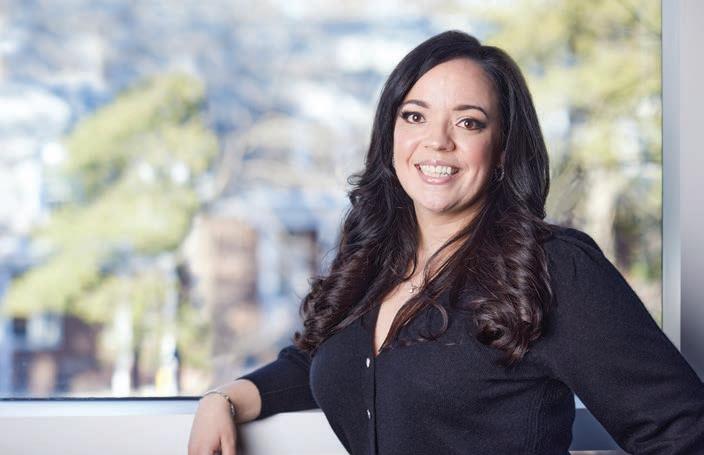
So, when Garbarino read Good Company, the 2020 book by Arthur M. Blank ’63, H’98, she had a big idea: a course that would take students to Atlanta for a week of experiential learning with the Arthur M. Blank Family Businesses and AMB Sports + Entertainment. Its holdings include the Atlanta Falcons, the Atlanta United soccer team, Mercedes-Benz Stadium, and PGA Tour Superstore. She was pleased when Blank executives agreed to participate. With the support of Babson’s Arthur M. Blank School for Entrepreneurial Leadership, the week
focused on Blank’s values-based leadership principles, such as Put People First, Listen and Respond, and Include Everyone.


Garbarino hoped to give students opportunities to network with company leaders. “I also wanted students to see in person how much every single executive and associate really embodied (Mr. Blank’s) core values,” she adds. Eighteen students were chosen by application to participate in the whirlwind week, held in August 2022. The itinerary included studentled panel discussions with Blank executives and multiple sporting events.
She was moved to see the students— who barely knew one another before the trip—develop tight bonds and engage eagerly in the daily activities.

“They really just gelled in this incredible way and really lived the values (we discussed),” she says. Back in Boston, the students continue to gather regularly. “The success of the course is the thing I’m the proudest of in my professional life,” Garbarino says.
She will return to Atlanta in August 2023 with a new cohort of Good Company, Good Game students and is considering a Boston-based version of the course in the future. Garbarino is expanding her expertise by nishing a master’s degree in sports management from Louisiana State University this year and has even bigger goals in mind. “My dream is to one day have a sports leadership institute at Babson,” Garbarino says. “We’re such a sports town, and there is so much enthusiasm from the students.” — Erin
O’Donnell















OFFICEHOURS PHOTO: MARK MANNE
PLEASE VISIT OUR DIGITAL BOOKSHELF BABSON.EDU/BOOKSHELF Featuring Publications by Babson Faculty
Leslie Garbarino created a course based on the 2020 book Good Company by Arthur M. Blank ’63, H’98.
8 BABSON MAGAZINE / SPRING 2023
The success of the course is the thing I’m the proudest of in my professional life.
READ MORE: bab.sn/GoodCompany
Small Talk with JERRY EPPS
For Jerry Epps, opportunity is everything. Babson’s first director of vendor diversity has spent his career finding, maximizing, and creating opportunities—for himself and others. Epps joined Babson in August 2021 after 42 years with Boston Children’s Hospital. He began in food service as a high school junior and eventually rose to become the hospital’s capital equipment buyer and its supplier diversity program manager. Now a leading expert in the field and employed at Babson, Epps has created the College’s Office of Vendor Diversity and its supplier diversity program.
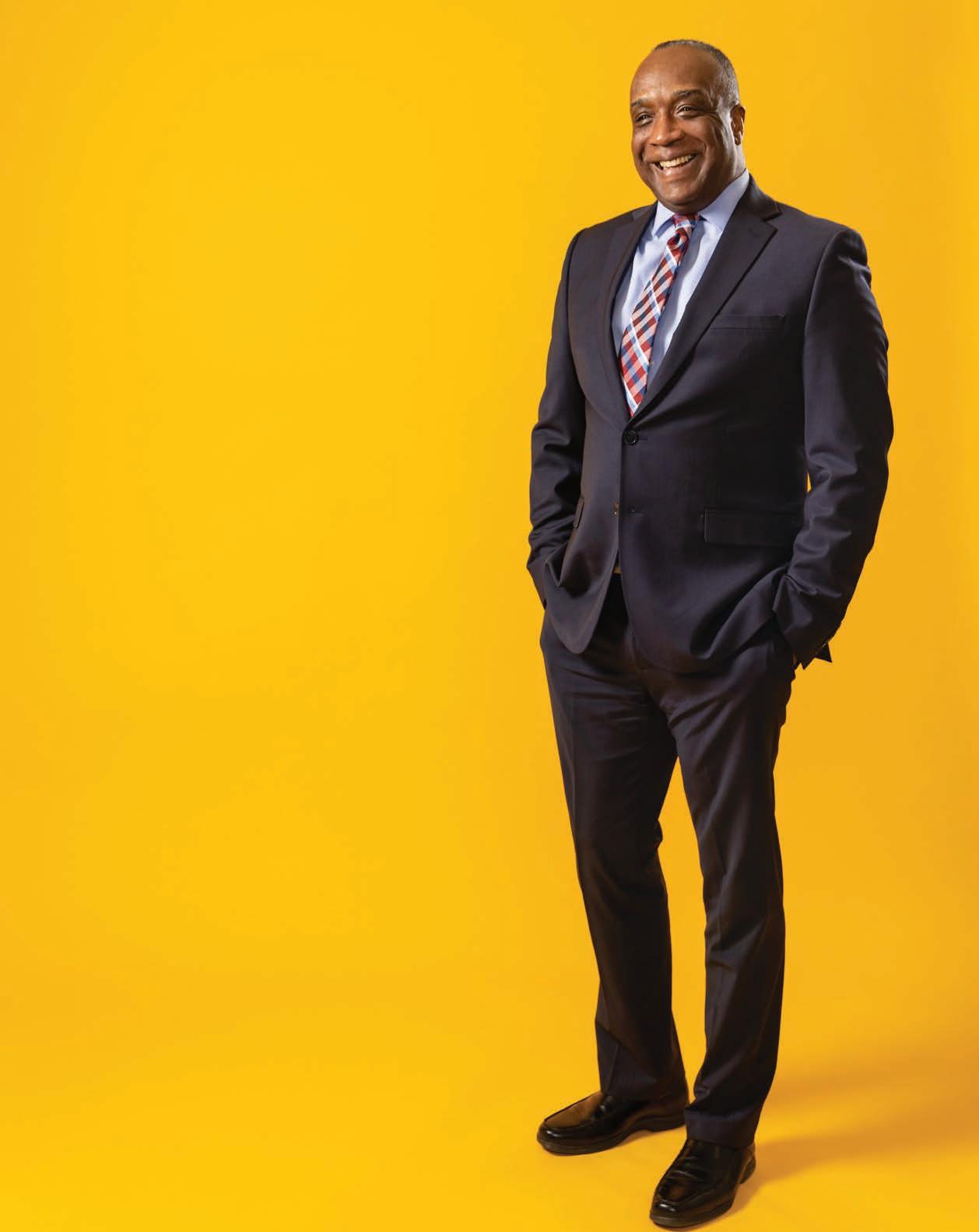
What motivated you to leave Boston Children’s Hospital and come to Babson?
“Never in my wildest dreams did I envision that I would stay there that long. By 2021, though, a lot of organizations were looking to expand their supplier diversity, and several had contacted me, including Babson. Everyone asks why I left, and I say it was the opportunity at Babson. This was an opportunity to go somewhere and build something from the ground up. It’s an opportunity to be the rst. I am in Babson’s history forever, and I embrace it.”
How do you describe your role as the rst director of vendor diversity?

“My job is to help small and diverse suppliers have the opportunity to do business with Babson College. One of my goals this year is to keep elevating Babson’s presence in this space—locally, regionally, and nationally. When I advise other organizations or meet with other people, I’m representing Babson.”
Why is vendor diversity important, especially in supporting the College’s objectives?
“Babson has an opportunity to lead on this and elevate it to a competitive advantage. The backbone of this country is small and diverse suppliers. They’re creating jobs; they’re providing health care; they’re paying taxes. If we’re an anchor institution, we need to support that economic impact. We’re not just going to check off the box when it comes to supplier diversity. We’re doing it to make an impact in people’s lives and help close the racial wealth gap.”
— Eric Beato
PHOTO: JAKE BELCHER
PEOPLEOFBABSON SPRING 2023 / BABSON MAGAZINE 9 READ OUR COMPLETE Q&A
EPPS: magazine.babson.edu
WITH JERRY
By John Crawford
In a future that will be increasingly complex and chaotic, students can’t afford to go it alone. That’s why Babson’s faculty are ensuring that students appreciate multiple perspectives, discern interconnections, and work well with diverse teams. This holistic, interdisciplinary way of looking at the world is a hallmark of the College and prepares students to take on challenges in their jobs and in society.
Last year, the world’s population hit 8 billion people. In 2037, it is expected to jump to 9 billion. By 2050, it will be closing in on 10 billion.
That’s a lot of people, and that large number poses a complicated, daunting question: How will we feed them all?
That monumental challenge hangs over Food Systems: Feeding the Modern United States, one of Babson’s Socio Ecological Systems (SES) courses, which became a requirement for all College undergraduates in 2021. SES courses each focus on a theme—one concentrates on urban environments, for instance, while others deal with climate or water—and are co-taught by two professors: one from the natural sciences and the other from

PHOTOS: JAKE BELCHER
10 BABSON MAGAZINE / SPRING 2023
Students conduct an experiment with soil in one of Babson’s interdisciplinary Socio Ecological Systems (SES) courses. A requirement for all undergraduate students, SES courses each focus on a theme such as climate, water, or urban environments. This SES class, co-taught by professors David Blodgett and Jessica Simon (middle left photo), looks at the production and accessibility of food.








SPRING 2023 / BABSON MAGAZINE 11
All Socio Ecological Systems courses are co-taught by two professors. In Food Systems: Feeding the Modern United States, professors David Blodgett and Jessica Simon take a wide-angle, interdisciplinary approach that’s a feature, not only of SES courses but also of other classes and programs at Babson.



the humanities or social sciences. Students typically take an SES course during their sophomore year.


Food Systems, which focuses on the production and accessibility of food, kicks off by looking at 2050 and those billions of mouths to feed. “You see how vast the problem is,” says Jessica Simon, associate professor of practice in economics and one of the Food Systems teachers.
Throughout the semester, the issue of food is examined from a holistic, all-encompassing panorama, from soil to supermarket to plate. Students look at farming practices and
PHOTOS: JAKE BELCHER
Dave and I are both open to different kinds of materials and seeing how they t. It makes the learning more exciting.
12 BABSON MAGAZINE / SPRING 2023
— Jessica Simon, associate professor of practice in economics
regulations, at the workers who make the food and the consumers who eat it, at the costs of food production on people and the environment, and at how ecological, social, and economic factors intertwine when we sit down at the dinner table.
It’s a complex course. Multiple perspectives are considered, and the consequences of decisions, from those of governments and corporations to those of consumers, are analyzed. “Every decision you make has some sort of impact, some bigger than others,” says David Blodgett, associate professor of biology and the integrated sustainability faculty director, who teaches Food Systems with Simon. “The course shows how all these pieces are linked together.”
This wide-angle, interdisciplinary approach is a hallmark of the SES courses. It’s also a thread that runs through many other classes and programs in both the undergraduate and graduate schools at Babson and is a key component of entrepreneurial leadership. To solve the complex troubles of our world, whether that’s ghting climate change or feeding 10 billion people, one must understand disparate viewpoints and disciplines

and work well with diverse groups.
“The world is changing rapidly. To solve the world’s largest problems, it will require interdisciplinary thinking,” says Wendy Murphy, professor of management and associate dean of the Undergraduate School. “The way we build knowledge is not just individuals in the eld. It takes a team. This is key to building the entrepreneurial leaders of the future.”
CAN’T GO IT ALONE

SES may be a relatively new course, but this interdisciplinary thinking is not new to Babson. “Babson has a long history of what we used to call integration. We were trying to transcend the disciplines,” says Sebastian Fixson, the Marla M. Capozzi MBA’96 Term Chair in Design Thinking, Innovation and Entrepreneurship. “It is an idea that has been here for at least a generation. In some sense, that is part of our DNA.”
The necessity of this interdisciplinary approach becomes apparent once students graduate and nd themselves in their careers working on elaborate projects or facing intimidating challenges. To get things done, they often need knowledge in multiple
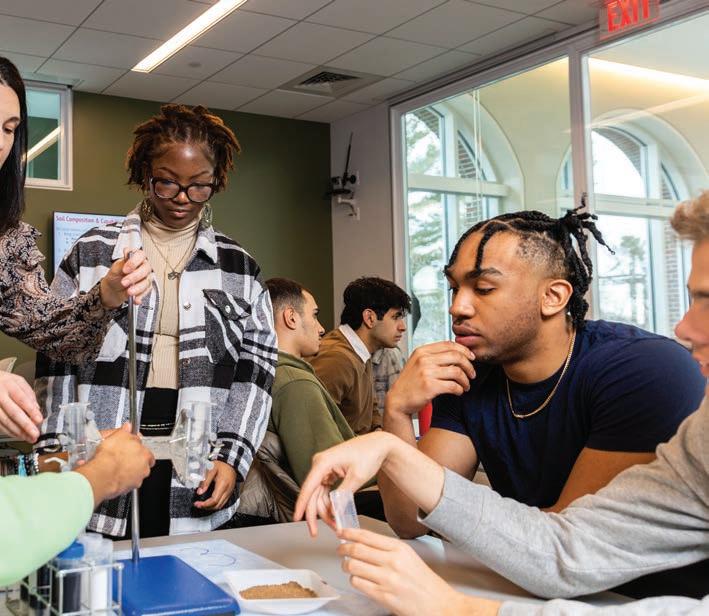
elds or collaboration with people from different departments. They can’t, in short, go it alone. They can’t be isolated in their relationships or siloed in their knowledge. “In real life, problems never come nicely compartmentalized,” says Fixson, also the associate dean of graduate programs and innovation.
This is especially true as the world has grown more and more complex. People can’t be expected to keep up by themselves. One person can only know so much about business and technology. “If you can’t collaborate, it is very dif cult,” Fixson says. “We need to nd ways to combine and integrate knowledge.”
That’s why interdisciplinary programs and courses often emphasize teamwork in situations that mimic the real world. One prominent interdisciplinary endeavor in the F.W. Olin Graduate School of Business is the Babson Entrepreneurial Thought & Action Experience, or BETA-X, a project in which MBA students work in teams to propose and re ne entrepreneurial ventures. As they work on their projects, BETA-X teams incorporate insights from eight different disciplines (see sidebar, Page 17).
PHOTOS: JAKE BELCHER
SPRING 2023 / BABSON MAGAZINE 13
The Food Systems: Feeding the Modern United States course begins with a daunting question: With the world’s population expected to be near 10 billion by 2050, how will all those people be fed?


14 BABSON MAGAZINE / SPRING 2023
PHOTO: JAKE BELCHER
The world is changing rapidly. To solve the world’s largest problems, it will require interdisciplinary thinking. The way we build knowledge is not just individuals in the eld. It takes a team. This is key to building the entrepreneurial leaders of the future.
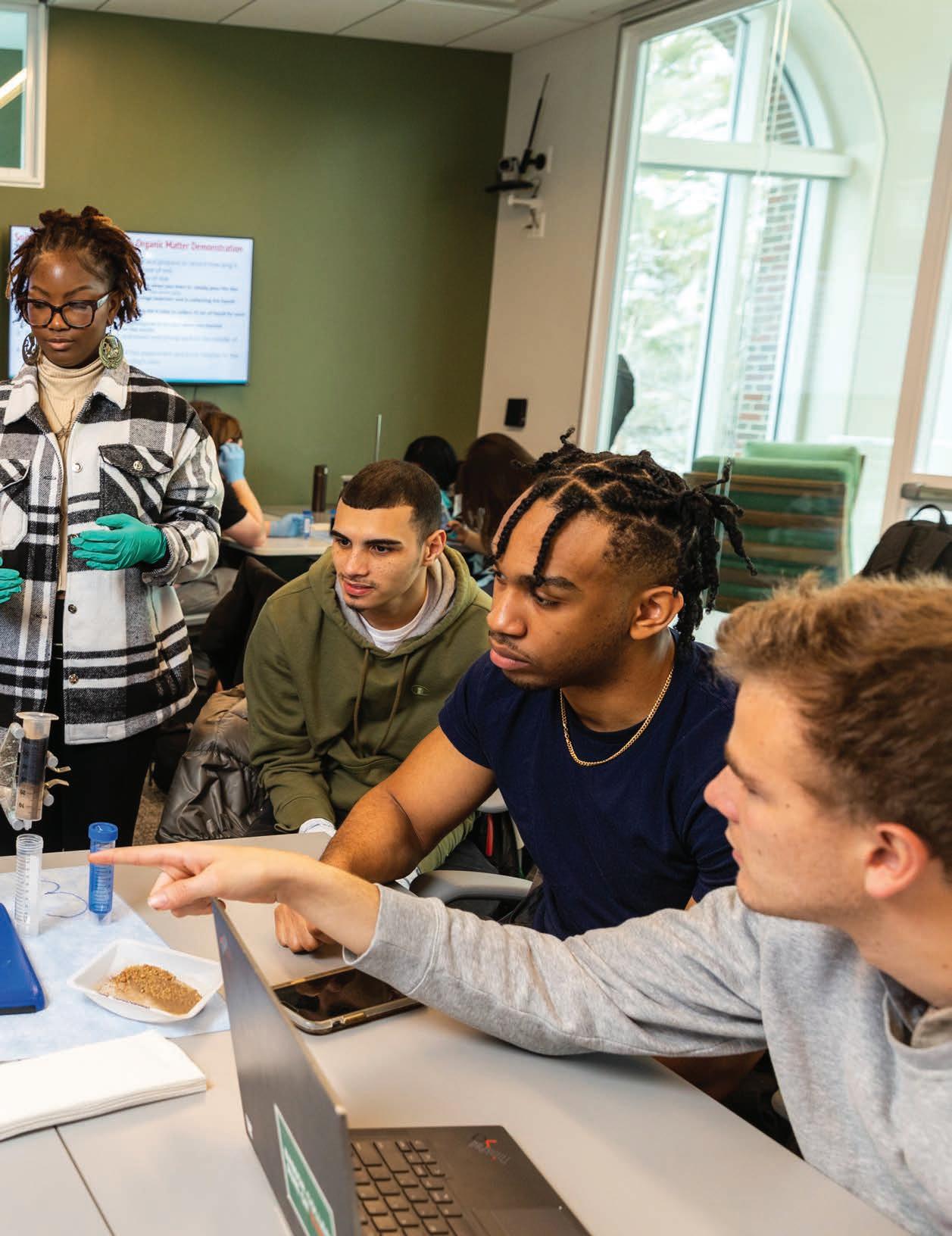 — Wendy Murphy, professor of management and associate dean of the Undergraduate School
— Wendy Murphy, professor of management and associate dean of the Undergraduate School
SPRING 2023 / BABSON MAGAZINE 15
Another interdisciplinary undertaking is the yearlong Leading Entrepreneurial Action Project, or LEAP, a central component of the MSEL degree. LEAP represents the intersection of two distinct elds: design and entrepreneurship. Students are again placed in teams and work toward producing a venture that is launch ready.
Visit a LEAP course on a typical Wednesday morning in Olin Hall Room 125, a classroom crammed with whiteboards just waiting for ideas and plans to be written on them, and you see eight small teams gathering around tables. “OK, let’s go to work,” says Fixson, calling the class to order. Munching on candy bars for a little energy, the teams huddle together and hash out whatever issues they’re facing, while Fixson and his co-teacher, Edward Brzychcy, an adjunct lecturer in the Management Division, go from table to table offering feedback.
In the graduate school, Fixson says,
students are taught how to work in teams and how to give and receive feedback from each other. Typically, they are grouped with people of varied backgrounds. “We are intentional about how we create teams,” Fixson says.

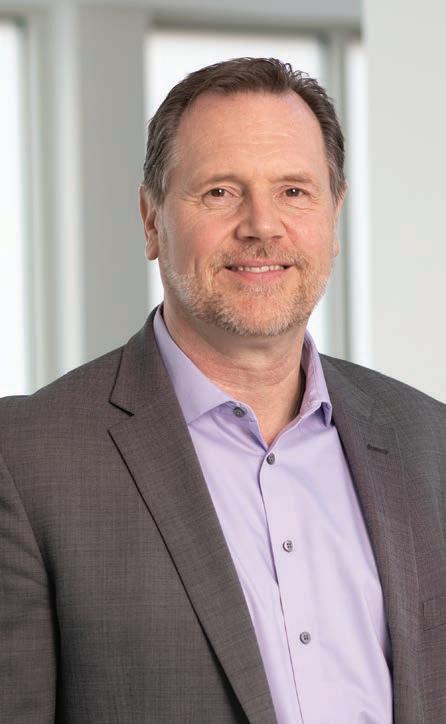
TWO TEACHERS, ONE CLASS
Another feature of interdisciplinary courses at Babson is that they are often co-taught by two professors from different disciplines, which brings varying perspectives into the classroom. LEAP is co-taught, as is perhaps the most well-known course offered at Babson—Foundations of Management and Entrepreneurship, or FME, in which rst-year undergraduates team up to launch ventures.
At 8 a.m. on a Tuesday, the sky brightening over the campus, the cotaught Food Systems class gathers in a Babson Commons classroom. At each table sit two soil samples.
Co-teachers Simon and Blodgett utilize a wide range of materials and activities in the class. That can mean podcasts, videos, news articles, academic papers, simulations,
experiments, or even going to the Weissman Foundry and preparing food with the students. “Dave and I are both open to different kinds of materials and seeing how they t,” Simon says. “It makes the learning more exciting.”
For today’s class, students will be testing two soil samples to see how well they retain nutrients. One sample is rich soil that is representative of regenerative farming techniques, while the other is less healthy soil indicative of industrialized farming. “You want to move your computers out of the way,” Blodgett tells the class. “We’re going to try and do an experiment.”
Having two teachers in a classroom is a signi cant commitment for Babson. “It’s challenging to have two teachers in the classroom from a logistics standpoint,” Blodgett says. But, it’s worth it, not only for the students but also for the professors, who are learning from the elds and teaching styles of each other. Blodgett enjoys studying his co-teachers in action. “A lot of
Sebastian Fixson, associate dean of graduate programs and innovation and Marla M. Capozzi MBA’96 Term Chair in Design Thinking, Innovation and Entrepreneurship
TOP LEFT PHOTO: JAKE BELCHER TOP RIGHT PHOTO: WEBB CHAPPELL
Sinan Erzurumlu, professor of innovation and operations management, and co-creator of BETA-X
Babson has a long history of what we used to call integration. We were trying to transcend the disciplines. It is an idea that has been here for at least a generation. In some sense, that is part of our DNA.
16 BABSON MAGAZINE / SPRING 2023
—
Sebastian Fixson
SEEING HOW THE PIECES FIT TOGETHER
Another characteristic of interdisciplinary learning at Babson is that it is often experiential.
The Babson Entrepreneurial Thought & Action Experience, or BETA-X, is a good example. In BETA-X, teams of full-time MBA students gain valuable experience by exploring and developing entrepreneurial projects, taking inspiration from initiatives that real-life companies are working on.
For example, student teams recently honed business concepts in one of three new focus areas of Procter & Gamble: women’s wellness, redefining aging at home, and maximizing mental and physical performance.
Procter & Gamble wasn’t directly involved in BETA-X (companies haven’t sponsored any projects as of yet, though they have served as judges of students’ work in the past), but its initiatives provided a crucial context for students to apply their skills.
“Students really understand what we are trying to teach them when we give them an experiential opportunity,” says Sinan Erzurumlu, professor of innovation and operations management, who co-created BETA-X, which launched in 2019. “It creates an active learning environment.”
BETA-X happens independently of any particular class, but as students work on their 14-week projects, they are taking their core courses at the same time. Any insights they learn in a course can then inform their project. “Each course makes an effort to create exercises or assignments that apply to the project,” Erzurumlu says.
By the end of BETA-X, students will have incorporated lessons from eight disciplines—a wide variety that includes everything from strategy to marketing to business analytics—and will have seen the role that each plays in developing a business venture.
“They see how the pieces come together,” Erzurumlu says. “They see all these pieces serve the same goal of exploring an entrepreneurial opportunity and growing that opportunity into a viable business.”
How BETA-X Works
For the first seven weeks, student teams identify a business concept. Simultaneously proceeding through four core courses, they view their project from the perspective of a C-level executive from each of those disciplines.
• 7 weeks
• 4 core classes
Entrepreneurship: CEO/Founder
Organizational Behavior: Chief Human Resource Officer
Strategy: CEO/Board Chair
Accounting: CEO/Chief Financial Officer/Board Chair
For the next seven weeks, student teams develop their business concept. Proceeding through another four core classes, they again take the perspective of a C-level executive.
• 7 weeks
• 4 core classes
Finance: Chief Financial Officer
Operations and Information Management: Chief Operating Officer/Chief Technology Officer/ Chief Information Officer
Marketing: Chief Marketing Officer
Business Analytics: Chief Data Officer
SPRING 2023 / BABSON MAGAZINE 17
times, I’ll watch the classroom,” he says. “I watch the students, how they interact with each other when someone else is teaching.”
Vikki Rodgers, professor of ecology, was a leader in developing Babson’s co-taught SES courses. When she discusses the coteaching approach at academic conferences, attendees are typically surprised and impressed.“This is unique,” she says. “It’s not offered at other schools.”


Students aren’t accustomed to this type of teaching either. “This is a new way of thinking for them. We are blending the disciplines together,” Rodgers says. “The goal is that they understand the vital importance of bringing different disciplines together to solve problems.”
Rodgers co-teaches an SES course called Prairie Systems with Mary Pinard, professor of English. The professors provide both a scienti c and artistic perspective on prairies, a rich, diverse, and stunning ecosystem that is often misunderstood as a barren landscape. “There is something
about the resilience of the prairie, the complexity of the prairie, the beauty of the prairie,” Pinard says.
As with Food Systems, Prairie Systems takes a holistic approach to its subject matter, looking at the interconnections between nature and humanity. Class discussions bounce between Pinard and Rodgers, the pair engaging with each other and demonstrating what collaboration between different disciplines looks like. “We hope it is a model for how students can work together,” Pinard says.
It’s a model that students need. They are graduating into a world lled with imposing problems such as structural injustices and climate change.
“Environmental issues often seem dire for the future,” Rodgers says. “I’m worried our students will throw their hands up and say there is nothing that they can do.”
The interdisciplinary thinking displayed in the classroom, however, offers them a way forward, a way to take on intractable challenges, a way to make a real difference in the future.
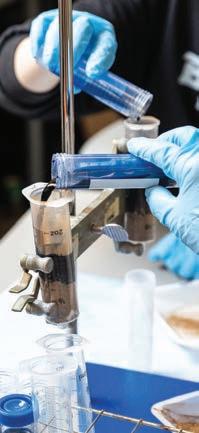

 Vikki Rodgers, professor of ecology
Mary Pinard, professor of English
In Food Systems: Feeding the Modern United States, students conduct an experiment testing two soil samples to see how well they retain nutrients. One sample is rich soil that’s representative of regenerative farming techniques, while the other is less healthy soil indicative of industrialized farming.
Vikki Rodgers, professor of ecology
Mary Pinard, professor of English
In Food Systems: Feeding the Modern United States, students conduct an experiment testing two soil samples to see how well they retain nutrients. One sample is rich soil that’s representative of regenerative farming techniques, while the other is less healthy soil indicative of industrialized farming.
TOP LEFT AND BOTTOM PHOTOS: JAKE BELCHER TOP RIGHT PHOTO:
QUIET
MICHAEL
This is unique. It’s not offered at other schools. … This is a new way of thinking for (students). You are blending the disciplines together. We hope they understand the importance of bringing disciplines together to solve problems.
18 BABSON MAGAZINE / SPRING 2023
— Vikki Rodgers
In Food Systems: Feeding the Modern United States, students grapple with the consequences that come with decisions. “Every decision you make has some sort of impact, some bigger than others,” says David Blodgett, associate professor of biology and the integrated sustainability faculty director.


 PHOTO: JAKE BELCHER
PHOTO: JAKE BELCHER
Learn More About Babson College’s Centers and Institutes
The educational collaboration at Babson extends beyond the classroom and the curriculum into the College’s centers and institutes. The Arthur M. Blank School for Entrepreneurial Leadership, home to six of them, was established in 2019 with a generous gift from Arthur M. Blank ’63, H’98 as a first-of-its-kind hub that connects and extends the Babson community to learners across the lifespan through real-life experience and practice.
The Arthur M. Blank School for Entrepreneurial Leadership
Est. 2019 / Chief Executive Officer Donna Levin
Arthur M. Blank Center for Entrepreneurship
Est. 1998 / Executive Director Smaiyra Million P’21
The nerve center for entrepreneurial activity at Babson and home of signature programs Rocket Pitch, B.E.T.A. Challenge, and Summer Venture Program, as well as the Butler Launch Pad, Global Entrepreneurship Monitor, Babson College Entrepreneurship Research Conference, and Butler Institute for Free Enterprise Through Entrepreneurship.
Frank & Eileen™ Center for Women’s Entrepreneurial Leadership
Est. 2000 / Executive Director Shakenna Williams ’94
The first center focused on women entrepreneurial leaders at a business school provides mentorship and resources to bridge the gender gap in business through programs such as Student Mentoring, Women Innovating Now (WIN) Lab®, Black Women’s Entrepreneurial Leadership program, and the Diana International Research Institute.
Bertarelli Institute for Family Entrepreneurship
Est. 2018 / Nulsen Family Executive Director Lauri Union Named for Ernesto Bertarelli ’89, a hub for research, resources, and innovative programming dedicated to amplifying the capacity of entrepreneurial families to create value together, and home to the Babson Global Family Entrepreneurship Network, Family Entrepreneurship Leadership program, and Family Entrepreneurship Amplifier.
FOR MORE INFORMATION ON BABSON’S CENTERS AND INSTITUTES:
20 BABSON MAGAZINE / SPRING 2023
Institute for Social Innovation
Est. 2009 / Executive Director Cheryl Kiser
The compass that inspires action around the biggest challenges of our time —the U.N. Global Goals—by hyper-focusing on generative relationships and offering experiential learning, from Inventureships and service immersion for students to executive certificates for nonprofit leaders.
Tariq Farid Franchise Institute
Est. 2021 / Executive Director Ab Igram MBA’96
The newest institute, supported by Tariq Farid P’15, creates cross-disciplinary programming that draws on Babson’s business and entrepreneurial expertise, combined with the experience and knowledge of franchising experts, to develop tomorrow’s franchise leaders and expand global opportunities for rising entrepreneurs.
Kerry Murphy Healey
Center for Health Innovation and Entrepreneurship
Est. 2019 / Faculty Director Wiljeana Glover
Where innovation meets entrepreneurship to create health, economic, and social value for all, with a focus on health equity and justice, through initiatives such as the UGHE/Babson Global Health Innovation Lab in Rwanda and Brazil, and robust research. Also received Babson’s first grant from the National Institutes of Health.
These centers and institutes also create collaborative opportunities for the entire Babson community:
Stephen D. Cutler Center for Investments and Finance
Est. 2000 / Managing Director Patrick Gregory, CFA
With a world-class finance lab located in Babson Commons, the Cutler Center enhances Babson’s innovative and practical approach to finance education through learning programs such as the Babson College Fund and providing access to state-of-the-art resources to improve students’ skill sets and marketability.
Herring Family Entrepreneurial Leadership Village
Est. 2021
A living-learning community where the Babson community and extended ecosystem come together—physically and virtually—to learn, collaborate, and take action. Construction of the village, including classrooms, collaborative spaces, an interactive studio, and a café meeting place, is expected to start in fall of 2023.
Weissman Foundry
Est. 2018 / Director Jonathan Griffiths
An open-door makerspace to provide Babson, Olin, and Wellesley students, faculty, and staff with the tools, resources, and trainings needed for new or existing projects through a suite of four distinct design studios and four separate collaborative spaces.
Retail Supply Chain Institute
Est. 2006 / Director Dhruv Grewal
A conduit for research and education between students, retailers, and their suppliers of merchandise, services, and information, and a liaison and facilitator between students and corporate affiliates for internships, independent studies, and full-time positions.
SPRING 2023 / BABSON MAGAZINE 21
MORE THAN ‘MORE THAN




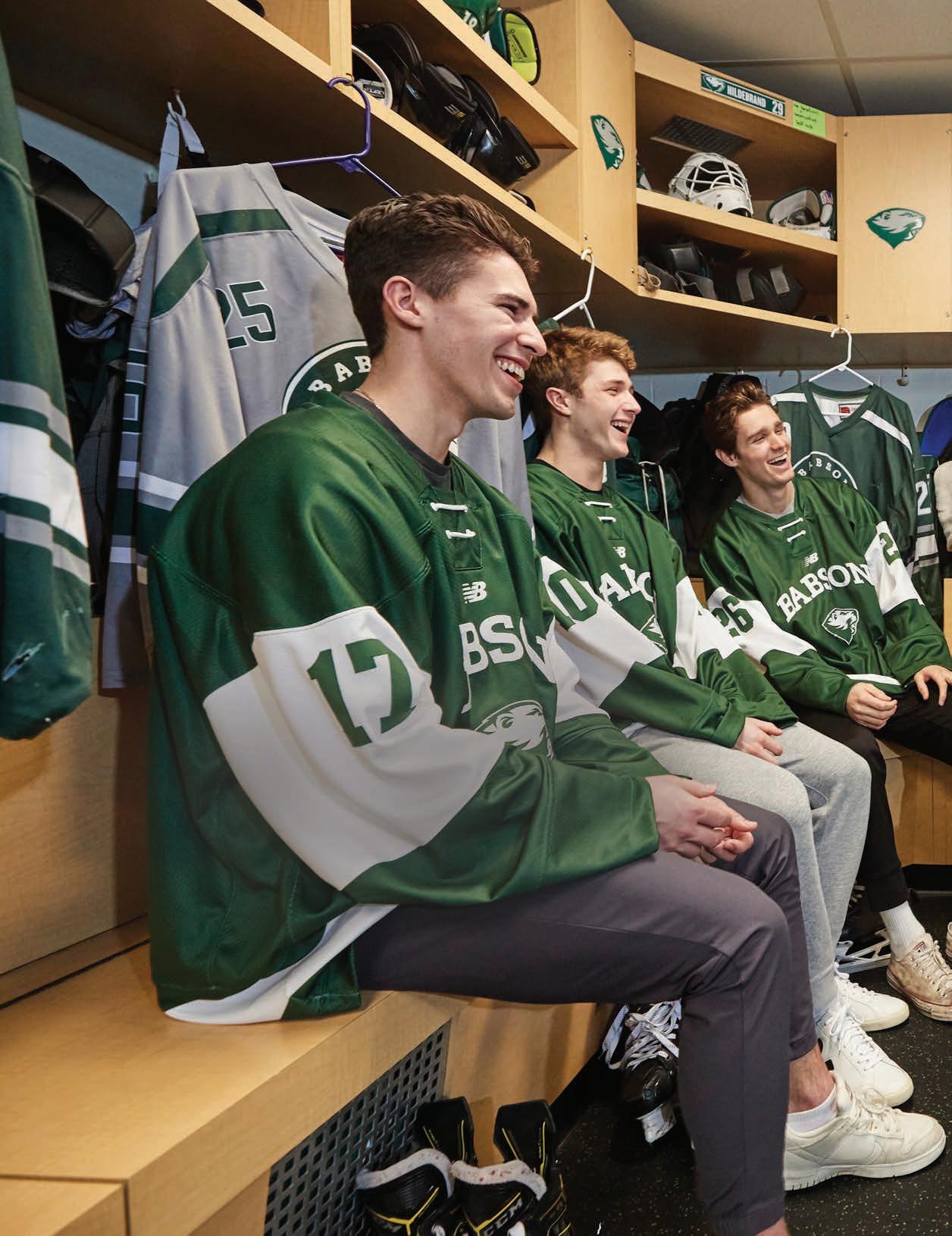 PHOTO: MICHAEL QUIET
PHOTO: MICHAEL QUIET
22 BABSON MAGAZINE / SPRING 2023
Jake Thibeault ’26 (right) immediately formed a unique bond with his “hockey brothers,” including (from left) Chris Rooney ’23, Charlie Andriole ’26, Brendan Kennedy ’26, Ryan Murphy ’26, and Nolan Woudenberg ’26.
THAN HOCKEY


THAN HOCKEY’
By Eric Beato
Now settled at Babson after a life-changing on-ice accident, Jake Thibeault ’26 provides inspiration and draws strength from the embrace of the Babson men’s ice hockey family.

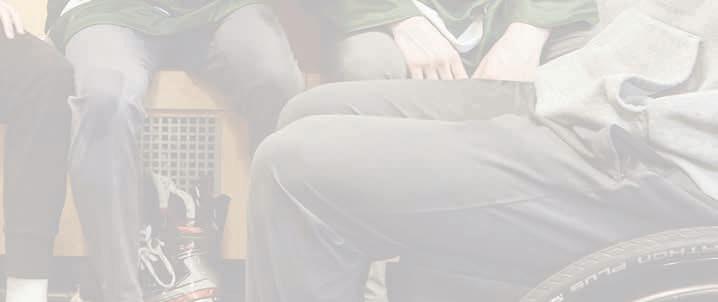


SPRING 2023 / BABSON MAGAZINE 23
Jake Thibeault ’26 sits in the weight room overlooking the Babson Skating Center rink. He’s alongside a half-dozen Babson College hockey players— the ones not skating this night— watching the Beavers pass and shoot all over Castleton University in a 7-0 rout. They’re dissecting the game, musing about the reactions of coach Jamie Rice ’90 on the bench, and generally chirping each other the way teammates do.
This is the environment and camaraderie that Thibeault sought out when deciding to attend Babson. Nearly a year and a half ago, as a standout hockey center at Milton Academy, an on-ice collision left him paralyzed.
“When you hear about Babson’s hockey program, it’s more than hockey,” he says. “I knew that was something I wanted to be a part of, and I truly see it.”



Thibeault might be sitting in a wheelchair tonight, but there’s nothing that distinguishes him from the other players. “Obviously, he’s in that tough situation, but we don’t even really see it that way,” says Rory Casey ’23, one of the players watching the game with Thibeault. “He’s just part of the family, and it’s just that he’s got a different perspective than we have.”
Thibeault’s presence and perspective have had a profound impact on the team and its 27 studentathletes. Those brotherly bonds may be forged in hockey, but they extend far beyond the rink.
“It’s been an incredibly enriching connection for our players and for myself,” said Rice, now in his 19th season as the men’s hockey coach. “He’s such a magnetic and powerfully positive personality that you can’t help but meet him and want to be a part of his journey.”
‘No Quit. Chip Away’
Thibeault’s Babson journey began in summer 2021 when he rst visited the campus and met Rice as a prospective hockey recruit. “With Coach Rice, it felt like a genuine conversation,” Thibeault says. “I knew something was special when I sat in the locker room with him.”
Less than a week after that visit, Thibeault was in the hospital with two broken vertebrae after a nasty, life-changing on-ice collision. He had just scored a goal for his club hockey team, the Boston Bulldogs. On his next shift, while chasing the puck, he was hit awkwardly by a defender, crashing head rst into the boards. Thibeault has no memory of the hockey accident. The spinal-cord injuries were major, the paralysis diagnosis scary. He was told he may never walk again—his once-bright future dimmed and in doubt.
The outpouring of support from the hockey community was immediate and impressive. Thibeault now counts Boston Bruins players such as Matt Grzelcyk—not to mention actor Mark Wahlberg—among his friends. One of the rst to reach out, though, was Rice. “When the injury took place, he was right there,” Thibeault says. “He was texting me and checking in within 24 or 48 hours. It was unbelievable.”
Rice rst visited Thibeault at Spaulding Rehab in Cambridge, Massachusetts, about a month later. He didn’t know what to do or what to say. “I didn’t know what my role was,” Rice says. It turns out the once-aspiring hockey player had something to teach the coach. “I left there that day just amazed by his toughness, resiliency, optimism, positivity.”
Rice stayed in touch almost daily, sending inspirational messages to keep his spirits up. Thibeault now wears a bracelet with the words “No Quit. Chip Away,” based on Rice’s motivational words that continue to drive him.
Now, as a rst-year student at Babson, Thibeault channels his athletic ability, strength, and determination toward taking another step toward his goal of walking again. He attends physical therapy at Journey Forward in Canton, Massachusetts, for three hours a day, four days a week. On Mondays, he does a cardio rowing program at Spaulding.
“I would love to be back out on that ice playing. I miss it every second. I believe there will be another day in my life that I step on that ice again on skates,” Thibeault says. “For the time being, I’m going to be there (with the team), to support and watch and help out in whatever way I can.”

PHOTO: MICHAEL QUIET
Here at Babson, I am beyond fortunate to be able to go to a school like this and have the family of hockey brothers I have in that room.”
24 BABSON MAGAZINE / SPRING 2023
— Jake Thibeault ’26

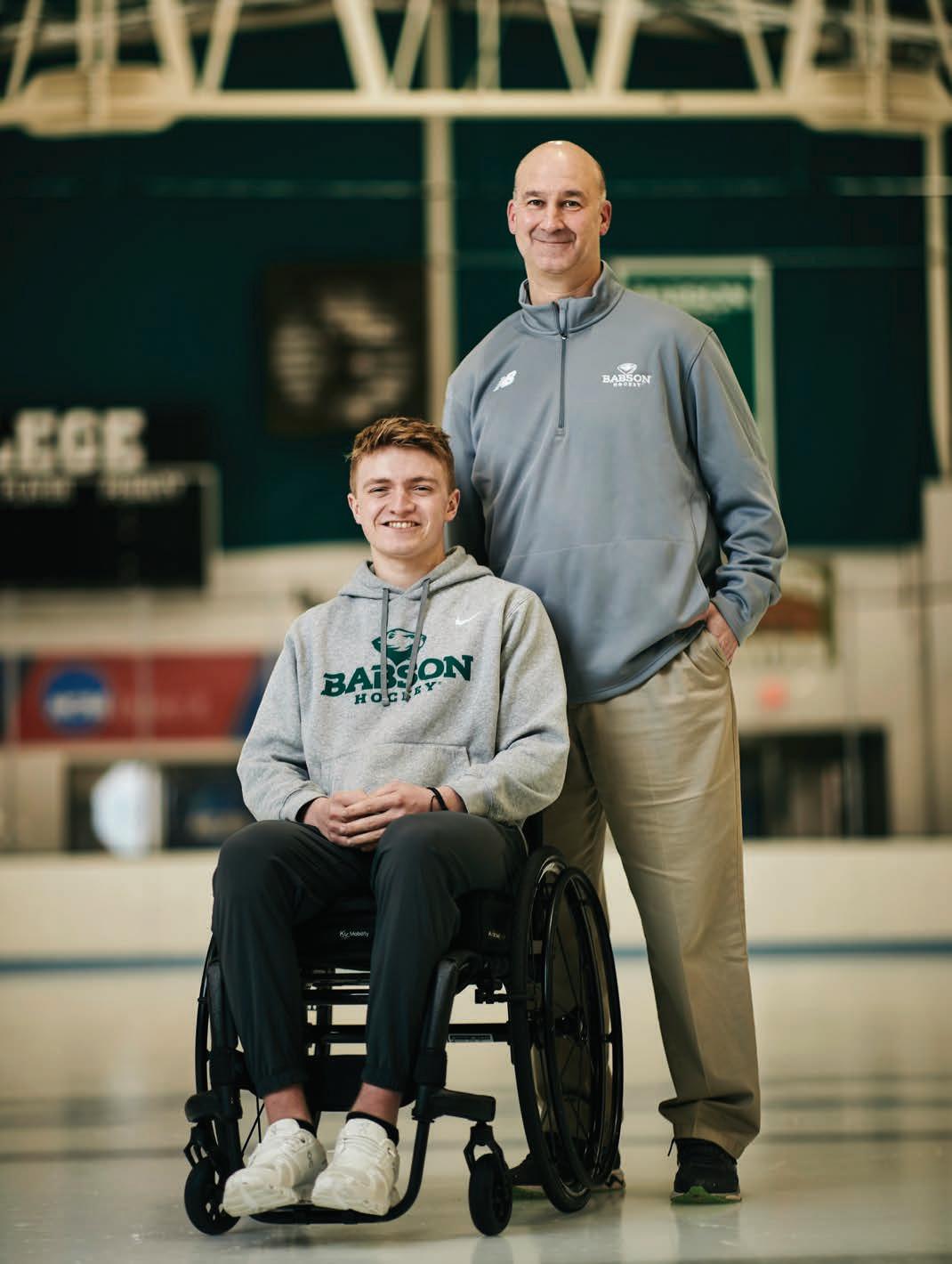 PHOTO: MICHAEL QUIET
PHOTO: MICHAEL QUIET
It’s been an incredibly enriching connection for our players and for myself. He’s such a magnetic and powerfully positive personality that you can’t help but meet him and want to be a part of his journey.”
— Coach Jamie Rice ’90
SPRING 2023 / BABSON MAGAZINE 25
Coach Jamie Rice ’90 stayed in touch with Jake Thibeault ’26 almost daily during his
early recovery.
A Coach’s Commitment

ASK RORY CASEY ’23 about the dedication of hockey coach Jamie Rice ’90 to his players, and he’ll share a personal story.
A forward from Newton, Massachusetts, he had committed to Babson as a high school senior, but then was diagnosed with a serious heart condition and had to undergo open-heart surgery. He called Rice to tell him he might never play hockey again.
“I didn’t have any other options. I was panicking,” Casey says. “I remember on the phone vividly, he says, ‘Rory, I wanted you four months ago, and I still want you now. No matter what your role is on this team, you’ll always be a part of it.’ ”
Casey played 15 games his rst year and scored three goals in 19 games as a junior. But, last November, in just the third game of his senior season, he suffered a major concussion and decided not to continue his playing career. Rice again pledged his support: “You’re part of this team, and you’re still going to have an impact in our locker room.”
“He creates such a positive environment for us because he cares about us as people more than he does as players,” Casey says. “Winning games is his job, but honestly, he just takes care of us and treats us like his own. The relationship he fosters with his players and then carries on with them as alumni speaks to how great of a person and coach he is.”
Casey knows, too, how that hockey bond continues beyond Babson. After graduating this spring, he is heading to New York City to work at Lord Abbett, an asset management rm. He’ll live with two former Babson hockey teammates, Connor Dahlman ’20 and Hunter Garlasco ’22. — Eric Beato
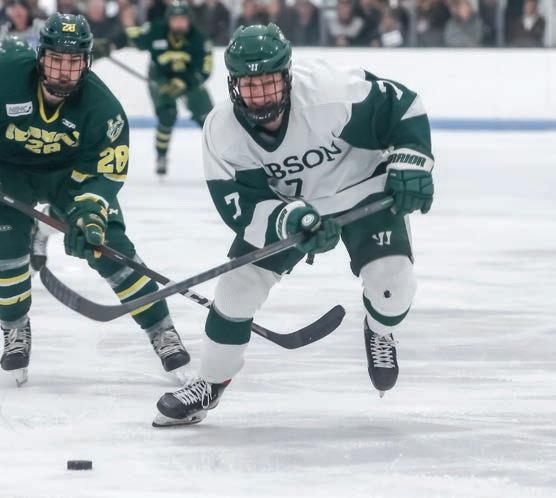
Building Bonds
During his early recovery, Thibeault also was determined to attend Babson, in large part because of Rice. It was the only college he applied to. “I sent my application in when I was in Spaulding Rehab,” he says.
Rice, who offered his support in helping Thibeault’s admission and transition, set the tone for the team from the day Thibeault arrived on campus and moved into a single room at Park Manor West. “First meeting,” Rice says, “I said to the boys, ‘Jake’s really important to me, which means he’s really important to our program, which means he needs to be important to all of us.’ ”
Thibeault’s charisma and con dence made that simple. “He’s so comfortable in his own skin, that it’s easy for us to be comfortable around him,” says Casey, who has become one of Thibeault’s closest friends.
“Jake is the best teammate I’ve ever had,” says Ryan Murphy ’26, one of 15 rst-year players on the team. “I have never met anyone as sel ess, motivated, and compassionate in my life. Every once in a while, Jake will come on the ice after practice and feed passes to a few of us. The joy and competitiveness on his face is one of a kind, and his love for his teammates and the game of hockey is second to none.”
As close as Thibeault is to the rst-year players, Casey says, he is just as likely to hang out with with the veteran players, such as himself or senior captain Chris Rooney ’23. “It’s unlike any team I’ve been a part of, how close-knit this team is,” Thibeault says.
Casey has missed most of his senior season (see sidebar) but says he has drawn strength from Thibeault’s example in staying positive and engaged with the team. “Jake’s a leader, and he doesn’t even know it, so I just kind of follow him,” Casey says. “He’s rubbed off on the whole team in such a positive way.”
Jake and the Boys
Thibeault lives independently and self-suf ciently and drives himself to and from rehab. But, he’s rarely alone. Charlie Andriole ’26 and Nolan Dion ’26 live next door in Park Manor West, and
PHOTO: JON ENDOW
26 BABSON MAGAZINE / SPRING 2023
Rory Casey ’23 scored three goals in 38 career games at Babson.
Brendan Kennedy ’26 and Nolan Woudenberg ’26 live two doors down. In the residence hall, they hang out, watch Bruins games and movies, and lean on one another for advice.
On campus or off, there are always extra sets of hands nearby. “These guys are with him 24/7—that’s in the trenches,” says Rice, referring to them as “Jake and the boys.”
Thibeault says the boys “lift me up”—emotionally and sometimes literally. They’re quick to hoist Thibeault and his wheelchair over a hurdle or up a ight of stairs. But,
Thibeault is just as fast to lend a helping hand, driving a teammate on an errand for hockey equipment, hosting the team at a holiday party at his home in Fitchburg, Massachusetts, or bringing guys out to dinner with Grzelcyk, the Bruins star defenseman.
“In the world of paralysis, you try to make things normal, and Babson has done that for me,” Thibeault says, noting the College’s accessibility services. “Here at Babson, I am beyond fortunate to be able to go to a school like this and have the family of hockey brothers I have in that room.”

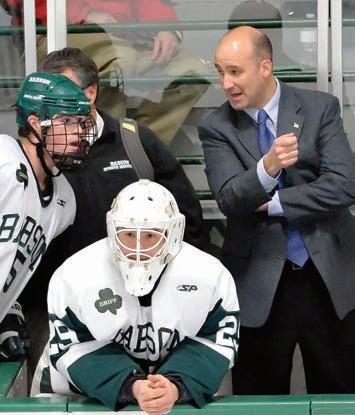

At left: On and off the ice, Jake Thibeault ’26 is surrounded by players such as (clockwise from center) Nolan Woudenberg ’26, Charlie Andriole ’26, Chris Rooney ’23, Brendan Kennedy ’26, and Ryan Murphy ’26.
Below: Coach Jamie Rice ’90 (top) and “Jake and the boys” (middle). Thibeault channels his athletic strengths into physical therapy (bottom) three hours a day, four days a week.
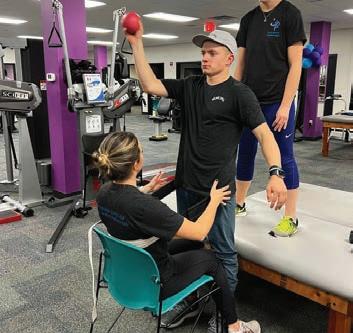
PHOTOS, CLOCKWISE FROM TOP LEFT: MICHAEL QUIET, JON ENDOW, MICHAEL QUIET, COURTESY OF JAKE THIBEAULT ’26
SPRING 2023 / BABSON MAGAZINE 27
ADV ANCEMENT SPOTLIGHT
Paying It
FORWARD
By Kara Baskin
Shaped by their Babson experiences—even long after graduating— alumni are motivated to continue supporting the College through their annual contributions.
Babson maintains a generous community whose reasons for giving are as diverse as its alumni, many of whom donate to the College every year.
Those annual contributions—no matter the amount—drive Babson’s fundraising efforts to improve and enhance every aspect of the campus experience, including academics and athletics, scholarships and facilities, and the endowment and annual operating budget. Annual donors ensure that the College has a consistent and reliable income stream that allows it to adapt to the ever-changing needs of the community.
For these three alumni donors who contribute annually, giving to Babson comes down to supporting and sustaining a place that feels like home, long after graduation.
Creating More Opportunities
Robert Brewster ’63 has donated to Babson for 60 consecutive years, starting shortly after graduation—because, as he puts it, “Babson came through for me
when I needed to get into college, and I’m thankful they did.”
Although Brewster eventually enjoyed a thriving career in accounting and management consulting, working with clients such as Harley-Davidson, he was once a wide-eyed college student at Rensselaer Polytechnic Institute. He intended to study engineering, as many students did during the Sputnik-era Cold War.
“I was going to be a civil engineer. Halfway through the rst semester, during an orientation class, I saw civil engineers traipsing around the Brazilian jungles, building bridges and roads. I said, ‘That’s not what I want to do. I want an of ce job,’ ” he recalls, laughing.
Instead, he set his sights on becoming a certi ed public accountant and planned to transfer to a school that offered business courses. On the advice of a friend, he toured Babson and met with the dean of admissions.
“The dean said: ‘I’ve got good news and bad news. If you want to enroll, you can. We’ll bring you in right away. The
28
BABSON MAGAZINE / SPRING 2023
bad news is, we don’t have any more rooms on campus, and you’ll have to live off campus until a room becomes available,’ ” he remembers.
Brewster happily took the deal (and moved onto campus the following semester). After graduation, he promptly landed interviews with seven top accounting rms, elding offers from several. Now retired and splitting his time between Florida and his longtime home in suburban New Jersey, he is delighted to return the good fortune.

“I think that people who don’t have the money to attend college should be given the opportunity. That’s why I always give to the scholarship funds,”





he says. “Babson is a good school, and I’m thankful to them for helping me out.”


Supporting Success
Like Brewster, Emily Mariani Consilvio ’01 experienced a sense of promise and warmth on campus. As a student, she enjoyed a work-study job at the Of ce of Class Deans. The of ce was full of “phenomenal women,” she recalls. “They were highly educated, competent, compassionate. Every day, I loved going to work. They became like family, even though my family was only a half-hour away in Med eld.”
Today, she has her own family, including four young children and her husband, Joe Consilvio ’00, MBA’11.
Time is at a premium. But, when Babson calls, she answers as a volunteer or as a donor—and as a shopper. Mariani Consilvio is a devoted customer of the Babson alumni store, Babson Street. Fittingly, she works in the corporate gifting arena, and her business, The Putney Group, takes its name from Putney Hall.
Mariani Consilvio happily supports Babson alumni by stocking up on clothing, dog leashes, puzzles, and more. She has a professional relationship with Bombas socks— founded by Babson graduates Andrew Heath MBA’12 and David Heath ’05— and, when the store began to offer branded versions, “I ordered about
SPRING 2023 / BABSON MAGAZINE 29
I think that people who don’t have the money to attend college should be given the opportunity. That’s why I always give to the scholarship funds. Babson is a good school, and I’m thankful to them for helping me out.”
— Robert Brewster ’63
PHOTO: BRIAN TIETZ
— Emily

50 pairs. The alumni of ce was probably like, ‘This woman’s crazy!’ ” she says, laughing. “But they’re fabulous.”
Most of all, she is happy to give back, whether it’s socks or scholarships.
“The school is so much more than the curriculum, which is world-class. It’s the community. It’s the physical campus, full of such natural beauty, and also the people who ll it,” she says. “The education outside of the classroom was equal to what I learned inside.”
Finding a Sense of Place
Candace Armand ’10 echoes that sense of homecoming. She discovered Babson through the Posse Foundation as a teenager on Long Island. As she learned more about Posse, which provides full-tuition leadership scholarships, she was struck by Babson’s reputation for innovation and supporting female scholars.
“What stood out to me were two things: One, Babson’s continued reign as number one in the world for entrepreneurship. Also, they had a women’s leadership program. I thought: How amazing would it be to go to a school that’s intentional about developing its female leaders?” she says.
Today, Armand serves on the Babson Alumni Advisory Board (BAAB) and its diversity, equity, and inclusion (DEI) committee. And she supports the Fund for Babson, various DEI programs, and the BAAB Scholarship.

“Having been a Posse Scholar myself—and being able to attend Babson because of the generosity of alums—it’s really important to pay that
forward,” she says. “Babson is a place where you can chart your own journey, as well as nd community and support. My Posse was my support system, and in terms of the environment, Babson felt like home.”
After graduation, Armand worked at Goldman Sachs in New York, onboarding institutional clients such as investment rms, hedge funds, and asset managers. After obtaining an MBA from Duke University, she became a management consultant with PwC. As part of the customer strategy and experience team, she focuses on helping pharma and life sciences companies transform their operations by leveraging new technology to increase speed and ef ciency. She leaned on Babson alumni for advice as she contemplated her next steps.
“I wanted to have an impact in a different way,” she says. “There was a point at which I hit a career in ection, and it was my Babson network who really helped me determine and charter my path forward.”
This isn’t her only job. She also runs a personal business, helping students to develop their soft skills, such as effective communication and networking. In fact, she might bring her workshops to Babson—stay tuned.
She lives by a mission. “It’s very simple: My mission is just to leave my mark on the world by helping people, and if giving is a way that I can actively do that, then that’s quite all right by me,” she says. “Now, I’m intent on paying it forward, especially as I continue to see the value of my own degree grow.”
30 BABSON MAGAZINE / SPRING 2023 ADVANCEMENT SPOTLIGHT
The school is so much more than the curriculum, which is world-class. It’s the community. It’s the physical campus, full of such natural beauty, and also the people who fill it.”
Mariani Consilvio ’01
PHOTO: MARIO MORGADO

SPRING 2023 / BABSON MAGAZINE 31
Having been a Posse Scholar myself—and being able to attend Babson because of the generosity of alums— it’s really important to pay that forward.”
— Candace Armand ’10
NOTES AND NODS
UNDERGRADUATE
Arnie Cowan ’77, P’25, who has worked at HP Inc. for the past 25 years as a sales specialist, said his daughter, Adri Cowan MBA’25, enrolled in an executive MBA program at Babson. Adri Cowan currently serves as the director of social media for Marvel Entertainment.


’64 (not pictured) reunited at Legal Seafoods last October. The long lunch was the first time the group of alumni has been able to meet since the COVID-19 pandemic. The friends used to meet every Christmas, a tradition held for 30 years. Being able to gather in person made the seafood summit all the more special. “Stories were swapped in grand style. Promises were made for the upcoming 60th reunion for the Class of 1963,” Regnier wrote.
1964
Richard Kimball ’64 writes that he is actively investing in early-stage companies, many of which were founded by Babson graduates. He also was recently elected to the board of directors of SafeSchools, an organization that provides safety and compliance training for school officials. Kimball is active with the Kimball Family Association’s scholarship fund and other nonprofit organizations.
1966
James Herbert ’66, H’19, a former Babson trustee and the chairman and founding CEO of First Republic Bank, has been given Dance Magazine’s 2022 Chairman’s Award. The award, chosen by Dance Media CEO Frederic M. Seegal, is meant to honor distinctive movers and shakers who are behind the scenes.

1991
Lee Kaltman ’91 is the founder and CEO of Ithaca Toys Factory, a social enterprise created to promote tactile play learning with sustainable products while providing workforce development in the community.
Brian Lynch ’79 is volunteering with the Peace Corps, beginning a two-year mission in the Kingdom of Eswatini in southern Africa. Lynch, 65, left his home in Wilton, Connecticut, and flew to southern Africa on February 21. Lynch is one of the first volunteers to head overseas since the Peace Corps temporarily suspended operations due to the COVID-19 pandemic. “I planned to join the Peace Corps once I graduated from college, but life just got in the way,” said Lynch, who saw his chance when he retired in 2019 after a 40-year career at companies such as Lord & Taylor, GAP, and the Walt Disney Company. “I’m at a time now where I’d like to give back, share my experiences, and learn from others and their culture.”
Chris Williams ’82, MBA’83 writes that he and a group of fellow alumni hit the links during their annual reunion in Delray Beach, Florida. The group, from left, included Jim Belli ’81, Ed Sheehy ’82, Joe O’Connor ’81, Williams, Bob Burr, Jamie Dulick ’82, Ken Jasper ’82, Dave Lamere ’82, Babson trustee Ken Romanzi ’82, and Tom Lydon ’82

Frederic S. Ury ’74 began working at Pullman & Comley LLC as a member of its litigation practice last November. Ury was hired to work out of the firm’s office in Westport, Connecticut, representing individuals, corporations, and small businesses. He also has represented other attorneys in ethics and disciplinary grievances, defending hundreds of cases in Connecticut.

NEWS
Len Wollins ’63, P’90 (from left), Paul Dernavich ’63, Roger Regnier ’63, Charlie Adams ’62, Ash Smith ’62, and Rob Wilkinson
32 BABSON MAGAZINE / SPRING 2023
Lawrence Ganti ’97 was named CEO of Fortify—which has created a new 3D printing technology called a Digital Composite Manufacturing (DCM) program—in November. Ganti, who has worked in Brazil, Japan, India, and Switzerland, will be Fortify’s second CEO. Jack Martin, the company’s co-founder and former CEO, said Ganti’s global experience will spark further growth for the Boston-based company, which began in 2016.

1998
Dina Kassis Gray ’98 is founder and CEO of the Massachusetts-based ABA Helps, a provider of in-home therapy services for children and young adults with autism. A special-needs parent herself, Gray started the company after seeing how few quality agencies there are for autistic children who age-out of traditional early-intervention programs.

2000
Sylvia Sun Limm ’00 recently founded Slimm Design: Happily Organized Homes, an interior design and home-organizing consulting company based in Belmont, Massachusetts.

2002
Jeff Perry ’02, who founded the sustainable urban lumber service Angel City Lumber, is participating in one of Babson’s Management Consulting Field Experience (MCFE) programs. The MCFE programs connect various businesses or organizations with Babson students focused on helping the organization overcome a current business challenge. Angel City Lumber makes first-run lumber out of felled trees in the Los Angeles area, trees that would otherwise be treated as waste and turned to mulch.
Daniela Erana-Andrade ’02 and seven other Babson graduates traveled to Ecuador last October, exploring the coast, thanks to Kontiki Expeditions— a tourism company focused on providing cultural experiences—created by fellow Babson graduate Maria Soledad Calderon ’02, who joined the group, and her husband. The other Babson graduates on the trip were Julia Ewald Brucher ’02, Maria Laura Calderon ’02, Sham Ehsani ’03, Yarilyn Perez ’02, Matthieu Taravella ’02, and Miguel Teixeira ’02 “It’s amazing how after 20 years from graduating, we are still close and were able to come together from all corners of the world,” Erana-Andrade wrote.
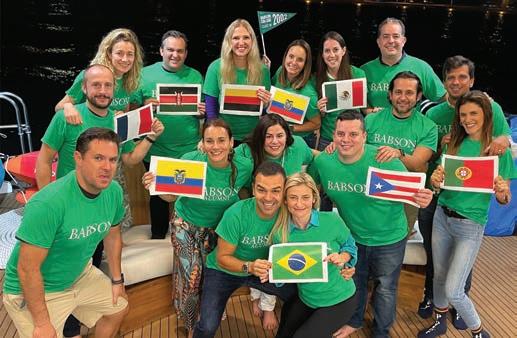
 Megan McGovern ’05 (center) is the founder and lead organizer of SORT, a company that offers professional organization services. McGovern recently appeared on NBC10 Boston during a segment about how to clear clutter and stay organized throughout the year.
Priyanka Chanchani ’09 won a Rising Star award during the Women in Derivatives Annual Gala on September 21 in New York. The award was for her work as head of the North American exchange team for Bloomberg.
Howard Brown ’88 led a group of Babson alumni and friends who planted two trees last fall in Detroit on Ellen Solomita Day of Service in honor of Ellen Solomita ’89. Pictured, from left: Rayshawn Whitford ’12, Karin (Dietz) Gearhart ’09 (with son NJ), Brown, Acheampong “Nicholas” Johnson MS’22, and Alan Bakst. Brown also published his memoir, Shining Brightly, including his experience as a former Babson trustee and president of the Babson Alumni Association, as well as a two-time Stage IV cancer survivor.
Megan McGovern ’05 (center) is the founder and lead organizer of SORT, a company that offers professional organization services. McGovern recently appeared on NBC10 Boston during a segment about how to clear clutter and stay organized throughout the year.
Priyanka Chanchani ’09 won a Rising Star award during the Women in Derivatives Annual Gala on September 21 in New York. The award was for her work as head of the North American exchange team for Bloomberg.
Howard Brown ’88 led a group of Babson alumni and friends who planted two trees last fall in Detroit on Ellen Solomita Day of Service in honor of Ellen Solomita ’89. Pictured, from left: Rayshawn Whitford ’12, Karin (Dietz) Gearhart ’09 (with son NJ), Brown, Acheampong “Nicholas” Johnson MS’22, and Alan Bakst. Brown also published his memoir, Shining Brightly, including his experience as a former Babson trustee and president of the Babson Alumni Association, as well as a two-time Stage IV cancer survivor.
SPRING 2023 / BABSON MAGAZINE 33

 Miguel Vázquez Jr. ’12 married Angela Grace Colantonio on September 3 in Hartford, Connecticut. His longtime friends and fellow alumni Amy Mon Park ’12 and Martika Jenkins ’12 attended the ceremony and celebration.
Miguel Vázquez Jr. ’12 married Angela Grace Colantonio on September 3 in Hartford, Connecticut. His longtime friends and fellow alumni Amy Mon Park ’12 and Martika Jenkins ’12 attended the ceremony and celebration.
34 BABSON MAGAZINE / SPRING 2023 NEWSNOTES ANDNODS
Claudia Gutierrez ’09 married Mario Chui on March 11 in Antigua, Guatemala. Many of Gutierrez’s Babson classmates were in attendance, including (from left) Natalie Bursztyn ’09, Jancy Yang ’09, P’26, Jose Villamar ’09, Chui (groom), Gutierrez (bride), Ted Plaisted ’10, and Justina Chung ’09
Brian Lawler ’15 married Sarah Anthony ’18 on September 24 at St. Michael’s Church in Netcong, New Jersey. Anthony, a Weissman Scholar, met Lawler
CPU Bible study at the Donald W. Reynolds Campus Center. Many of their Babson alumni friends joined the wedding, including (from left) Cassie Bybee MBA’20, Malcolm Bybee ’14, Ary Schlumberger ’15, John Lawler ’84, MBA’89, Jack McCarthy ’81, Lawler (groom), Anthony (bride), Jarrod Ford ’16, Elijah Arnold ’15, Trevor Sullivan ’15, Mackenzie Rafeldt ’15, Tyler Rafeldt ’15, and Chris Harrington ’15 Devon (Gay) Sullivan ’15 also attended. “We’re blessed to have wonderful family and friends together for the celebration,” Brian Lawler said. “We’re honored to continue to be a part of the Babson community.”

 during
during
SPRING 2023 / BABSON MAGAZINE 35
Jenn MacAuley ’16, MBA’24 married Steve Schlesinger MBA’24 on October 1 in Arlington, Massachusetts. Several of their former Babson classmates attended, including (from left) Trevor Sullivan ’15, Lauren Kaley ’17, Devon (Gay)Sullivan ’15, Hayley Malloy ’16, MacAuley (bride), Schlesinger (groom), Emily Cleland ’16, Kacy Cuenta ’14, and Lizzy Egan ’16
MIAMI CONNECTIONS




Babson alumni, parents, and friends rang in the New Year together with celebrations across North America.


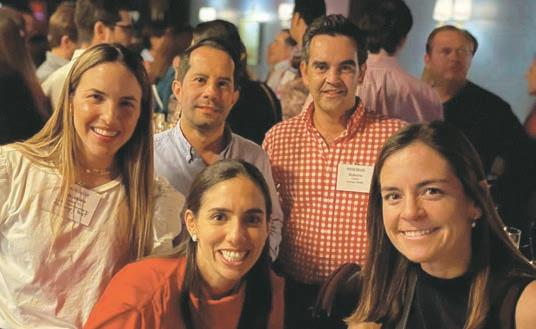


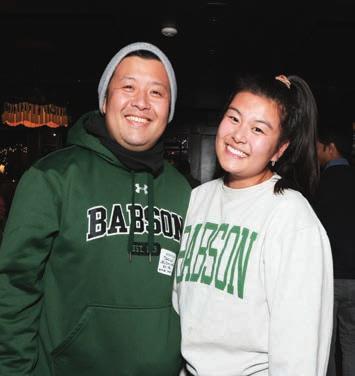
OLD FRIENDS, NEW YEAR! BOSTON
HAWAII NEW YORK
From left: Ashlee Chung ’05, Adrian Kerwin, and Erin Mitsuyoshi ’06 hosted by Melissa Bruhl P’25 and Robert Bruhl P’25 at their home in Kailua, Hawaii
From left: Beckie Salzberg MBA’23, Oliver Davis ’15, Shruthi Harve ’15, and Saniya Waghray ’15 at the historic Lotos Club in New York City, one of the oldest in America
Jeffery Perry ’87, P’23 (center, gray jacket), chair of the Babson Board of Trustees, with alumni at The Drawing Room at the Chicago Athletic Association
Clockwise from left: Alejandra Cangas ’11, Juan Camilo Perez, Roberto Castro, Ana Maria Rodriguez ’04, and Carla Curiel ’05, president of the Alumni Club of South Florida
Takuo Urushihara MBA’15 (left) and Celine Nie ’20
CHICAGO
36 BABSON MAGAZINE / SPRING 2023
Widmaier Charles ’13 joined the Boston law firm of Sugarman Rogers as an associate attorney in September. His practice centers on business disputes, insurance and reinsurance matters, and real estate litigation. Charles served as a law clerk to Justice Ariane D. Vuono at the Massachusetts Appeals Court before joining the firm, and he attained his real estate broker license before law school. “We are excited to have Widmaier at the firm,” said managing partner Christine Netski. “He has a strong civil litigation background and excellent business insights from his time in commercial real estate that will serve our clients very well.”

2014

Eric Muli ’14 was named among the Top 100 Kenyans 2022, an annual list released by local news site Kenyans.co.ke. Muli made the list as founder and CEO of Lipa Later, a consumer credit platform that operates in the Buy Now Pay Later (BNPL) model. Muli founded the company in 2017, and it operates in Kenya, Uganda, Tanzania, Rwanda, Nigeria, and Ghana, serving 200,000 customers. Lipa Later has since expanded, allowing customers to acquire various services in addition to items that they can put on credit and pay over a period of time.

2022
Jonathan Bensadon ’22 founded a new company, Bedly, to help people sleep better. Bedly straps are designed to wrap around your mattress topper and mattress pad to ensure they stay secure. The company also offers clips at the end of the straps that allow you to attach them to your bed sheets so that your fitted sheets stay fitted.
Maria Bravo ’20 celebrated her recent engagement at the Harvard Club in New York in October. Many of her Babson classmates were at the celebration, as well as Mike Lynch, the Pamela P. and Brian M. Barefoot Athletics Director and Senior Director of Athletic Advancement at Babson College.
SPRING 2023 / BABSON MAGAZINE 37
Sasha Pronin ’21 recently joined Ramp, a credit card and financial automation company. Ramp is a free corporate card and expense management platform that helps companies consolidate cards, pay bills, or file for reimbursements to increase efficiency.
GRADUATE 1993
Ruthie Davis MBA’93 recently released on her website a limited-edition line of designer sneakers that she created with members of the Boys and Girls Club of Southeastern Michigan (BGCSEM). Davis, who began selling her signature brand of apparel and footwear in 2006, has worked with Disney, Swarovski, and Universal Studios. Top celebrities such as Beyoncé and Lady Gaga have worn her shoes. But, Davis wrote, collaborating with more than 20 young members of BGCSEM to design and produce sneakers inspired by the concept of “One People” was a deeply meaningful experience. “It’s more about doing and learning and sharing than it is about brand building,” Davis said. Detroit-based fashion label Deviate also worked on designing the brightly colored kicks. All sales of the sneakers benefit BGCSEM.
2011
JoAnne Artesani MBA’11 launched Sproutr Inc., a consulting company meant to help new insurance firms in their early stages. Artesani is the founder and CEO of the company, which supports startup, early venture, and growth-stage insurance-focused organizations during their build-out phase.

2013
Kaine Nicholas MBA’13 was recently named interim CFO for YWCA USA, a nonprofit organization dedicated to eliminating racism, empowering women, and promoting peace, justice, freedom, and dignity for all. Nicholas is responsible for the strategic leadership of the finance, accounting, and internal administrative functions and provides financial strategy, budget management, and forecasting needs to YWCA’s leadership.
2019
Srikanth Katikala MBA’19 and Jennifer Widjaja MBA’19 co-founded a social enterprise company in Singapore that helps reduce food waste, redistributing unsold surplus food by connecting consumers and eateries. The classmates started their business, JustDabao.com, in 2020 as most consumers were staying home due to COVID-19. As a result, the food and beverage industry struggled and threw away edible, unsold food daily. “Eventually, I married my co-founder,” Katikala said of his bride, Widjaja. “Now, we are husband and wife, running a startup together in Singapore, and we’ve raised over $500,000.”
2010
Alice Palmer MBA’10 was hired as chief marketing officer of Neustar Security Services, a company that provides cloud-oriented security services for global businesses. Palmer took the position in October. Palmer, the Class of 2010 valedictorian, brings more than 20 years of marketing experience at both public and private organizations to the leadership role. “With her broad, global perspective and data-driven marketing savvy in the B2B tech space, Alice brings a unique skillset to her role as chief marketing officer,” said Colin Doherty, CEO of Neustar Security Services. “We are thrilled to welcome her to the leadership team.”
2015
Michelle Johnson MBA’15 was appointed CEO of Metrum RG, a global leader in biomedical modeling and simulation solutions. Johnson was previously COO, providing strategic business direction and instrumental in building and leading a high-performance business team. She took the role in October.
“I was drawn to Metrum RG because of the mission of defeating disease, and I am committed to ensuring this continues to be our compass,” Johnson said. “I am grateful for the opportunity to empower my teammates to bring their expertise, insight, and innovation to all we do.”
ALUMNI NEWS is in demand!

To accommodate news and photos from as many alumni as possible, please limit entries and photo captions to 50 words or less.
Babson Magazine has two requirements for Alumni News photos:
The submitting alum must be in the picture, and the image must be at least 4 x 6 inches at 300 dpi—no digital alterations, please. We can’t promise that all submitted photos will run, but we’ll include as many as possible.
Submit your latest news to the Alumni News Editor at babson.edu/nods
Milka Milliance MBA’09 (left) recently co-founded Different, a Black, Asian, queer, women, and nonbinary-owned diversity, equity, and inclusion consulting company. Milliance and her business partners, Grace Yi (center) and Alex Suggs (right), believe that in order for diversity, equity, and inclusion to be truly transformative, structural systemic solutions must be paired with a shift in mindsets and change in behaviors at all levels of an organization.
38 BABSON MAGAZINE / SPRING 2023
Gustavo Mayen MBA’17 was invited to be part of the teaching team at Harvard Law School’s Fall Trial Advocacy Workshop for the second year in a row. The workshop is an intensive course in trial analysis, skills, and techniques taught in three weeks.
IN MEMORIAM
William H. Johanson, of Wrentham, Massachusetts, died on Jan. 28. He worked at Babson College for 17 years as a trades supervisor.
Lori Ann Sullivan P’16, of Stoughton, Massachusetts, died on Jan. 13. Sullivan had worked as Babson’s procurement card program specialist since 2010.
Clarence Monroe Howard Jr. ’49, of Sandy Springs, Ohio, Oct. 20
Ralph Elmer Jones ’49, of Newnan, Georgia, Dec. 16
Charles Whiteside Williams ’50, of Saugatuck, Michigan, Oct. 19
Joseph Bradish Nye III ’51, P’84, of New London, New Hampshire, Dec. 3
John Harry Wallach ’53, of Redding, California, Jan. 18, 2022
Lawrence Vernon Robinson Jr. ’54, of East Greenwich, Rhode Island, Sept. 4
Clement Paul Eckrich ’55, of Daniel Island, South Carolina, Oct. 10
Ambrosio Peña Jr. ’55, of Bucaramanga, Colombia, Nov. 15
William Williamson Smith ’57, of Healdsburg, California, Sept. 19
Stephen Jay Britt ’58, of Easton, Maryland, Dec. 31
Sheldon Robert Roth ’58, P’82, of Scottsdale, Arizona, Nov. 18
Stephen F. Briggs II ’59, P’88, of Naples, Florida, Sept. 9
Fred Wallace Gorr ’59, of Lake Forest, Illinois, Jan. 8
George Harry Smith Jr. ’59, of Fairfield
Glade, Tennessee, Jan. 25
Michael Farnsworth ’60, of Rye, New York, Jan. 12, 2022
George Michael Benda MBA’60, of Kannapolis, North Carolina, Nov. 14, 2021
Sidney Aaron Cramer ’61, of Niskayuna, New York, Nov. 27
Gerald Stanwood Roberts ’61, of New Canaan, Connecticut, Dec. 28
John Michael Barry Jr. ’62, MBA’63, of Lawrence, Massachusetts, Dec. 25
Howard B. Kouffman ’62, of Long Island, New York, May 22
Charles Richard Murdoch ’62, of Hampton, New Hampshire, Nov. 5
Steven Steuart Walker ’62, of Middletown, Rhode Island, Aug. 12
Theodore R. Walter Jr. ’62, of Morristown, New Jersey, Oct. 21
Dixon D. Griffin MBA’62, of Biddeford, Maine, Oct. 15
Bernard Frederic Fabian ’63, of Middletown, Connecticut, Jan. 23
Samuel Albert Myers ’63, of LeRoy, New York, Sept. 11
Gerald Rolnick ’63, of Boca West, Florida, Dec. 9
Joel Peter Rudolph ’63, of Palm Springs, California, Nov. 29
Donald Francis Garvais MBA’63, of Brooklyn, Connecticut, Jan. 9
Edward Belansky ’64, of Boynton Beach, Florida, June 5, 2021
Bruce Warren Davis ’64, of Westwood, Massachusetts, Oct. 20.
Thomas Stevenson Whitman Jr. ’65, of Alexandria, New Hampshire, Jan. 16
Peter Gerard Fallon Jr. MBA’65, of Scituate, Massachusetts, Nov. 15
Ferdinand F. Forte MBA’65, P’78, of Chestnut Hill, Massachusetts, Aug. 23
Paul V. Dee Jr. ’66, of Concord, Massachusetts, Aug. 1
Edward T. Maguire MBA’66, of Winchester, Massachusetts, Dec. 2, 2021
Retired Army Lt. Col. Armand Eugene
Malo MBA’66, of Fredericksburg, Virginia, Aug. 6, 2021
John Thomas O’Keefe MBA’66, of East Weymouth, Massachusetts, Aug. 17
Kenneth Robert Leahy MBA’67, of Wellesley, Massachusetts, Nov. 26
Dana Bruce Prince MBA’67, of Denver, Colorado, Nov. 10
Van R. Martin ’68, of Miami, Florida, Nov. 29
Riford Robert Tuttle Jr. ’68, of Rutland, Vermont, May 13
David Hoyt Cockley Sr. MBA’68, of Shaker Heights, Ohio, Aug. 26
Retired Army Maj. Laurence Eugene Linden MBA’68, of Round Rock, Texas, Oct. 27
Dennis E. Ott ’70, of Hummelstown, Pennsylvania, Oct. 25
Frederick Roy Woodside ’70, of Weston, Massachusetts, Sept. 2
Francis Xavier Fitzgerald MBA’70, of Berlin, Connecticut, Sept. 2
Melinda L. Theodore P’95, of Westwood, Massachusetts, died on Dec. 6. Theodore served as editor of Babson Magazine for 21 years, from 1989 to 2010.
Elizabeth R. Thornton, of Philadelphia, Pennsylvania, died on Dec. 26. Thornton was Babson’s first chief diversity officer and worked at the College from 2008 until 2017.
John F. Abeel Jr. ’71, of Madison, Connecticut, Jan. 30
Jay F. Blunt ’71, of Long Grove, Illinois, Nov. 12
William Thomas Kennedy MBA’71, of East Walpole, Massachusetts, Nov. 16
William John McKay Jr. MBA’71, of Mashpee, Massachusetts, Jan. 5
Shakir Samuel Shukri MBA’71, of North Grafton, Massachusetts, Sept. 4
Bruce Kenyon Lockhart Willard MBA’71, of Concord, Massachusetts, Oct. 25
Marshall Loren Pabst ’72, of Ponte Vedra Beach, Florida, Dec. 3
David A. Mason Jr. ’73, of Centerville, Massachusetts, Dec. 19
Theodore L. Vitas ’74, of Hampton, New Hampshire, Oct. 25
Charles Thomas Cobb MBA’74, of Avon, Connecticut, Jan. 24
John Davis Miller Jr. MBA’74, of Tulsa, Oklahoma, Sept. 22
Thomas J. McQuaid ’75, MBA’76, P’06, of Norwood, Massachusetts, Dec. 19
Retired Army Col. John Michael Kain MBA’75, of Spearfish Canyon, South Dakota, Sept. 9
David M. Tagliamonte MBA’75, of Duxbury, Massachusetts, Sept. 22
Thomas Edward Broock MBA’76, of Brookings, Oregon, Nov. 5
Deborah Ann Herbert MBA’76, of Lexington, Massachusetts, Oct. 23
Joseph J. Travia Jr. MBA’76, of Reading, Massachusetts, Sept. 5
Donn Chandler Innes ’77, of Weatherly, Pennsylvania, Jan. 16
Fred Agostini Bortolussi Jr. MBA’77, of Walpole, Massachusetts, Dec. 10
Bruce Anderson Tobey MBA’77, P’08, of Hopkinton, Massachusetts, Oct. 17
Robert John Gutmann ’78, of Billerica, Massachusetts, Nov. 26
Wendy Bel McLaughlin ’79, of Plymouth, Massachusetts, Oct. 9
Carol Bartnick Begley MBA’79, of Charlestown, Massachusetts, Jan. 13
Willard Barron Johnson III MBA’79, of Shrewsbury, Massachusetts, Nov. 3
Balsam S. Nashed MBA’79, of Arlington, Massachusetts, Jan. 17
Laura Jane Brown ’82, of Gloucester, Massachusetts, Oct. 17
Claire Mary Gorman MBA’82, of Wellesley, Massachusetts, Jan. 12
Daniel J. Rufo Jr. MBA’82, of Natick, Massachusetts, Oct. 7
John A. Sanford MBA’82, of Scituate, Massachusetts, Sept. 27
Santiago Alfonzo MBA’83, of Caracas, Venezuela, July 2
Stella Marcia Caregeorges MBA’83, of Albuquerque, New Mexico, Nov. 11
Petrie Kodzis ’85, of Lake Forest, California, Jan. 12
Sharon Pellegrino Stone MBA’87, of Glastonbury, Connecticut, Oct. 26
Robert H. Studley Jr. ’90, of Boxford, Massachusetts, Jan. 27
Nelson Hill Garman ’91, of Peaks Island, Maine, Jan. 25
Jeffrey Scott Sieswerda ’91, of Sherborn, Massachusetts, Oct. 29
Stephen Paul Hassell MBA’92, of Arlington, Massachusetts, Jan. 1
Stephen J. Brown ’97, of Harvard, Massachusetts, Sept. 13
Jonathan Lee McGowan ’97, of Venice, Florida, Dec. 27
Douglas Mayhew Sawyer MBA’98, of Seekonk, Massachusetts, Nov. 22
John Francis Marc-Aurele MBA’02, of Worcester, Massachusetts, Oct. 25
Sharon C. Taylor MBA’03, of Franklin, Massachusetts, Nov. 21
Richard L. Kammerling, of Huntington Station, New York, Nov. 21, 2021
Thomas Stuart Moore, of Melrose, Massachusetts, Dec. 14
SPRING 2023 / BABSON MAGAZINE 39
A Homeland in Peril Inspires Action
PASSION FOR OCEAN CONSERVANCY PROPELS ELA GOKCIGDEM ’24 TO GLOBAL STAGE
Ela Gokcigdem ’24 has traveled the world, but her heart has never left her homeland in Turkey. Her grandparents instilled a deep love for Avs¸ a Island in the Sea of Marmara.
“They viewed that island as a sacred space,” she says. “But, even as a little kid, I noticed that my island pollutes so little yet takes all of the hits from mainland Turkey.”
She was only 8, but that realization ignited a passion for ocean conservation that has propelled her to the global stage. “I’m really grateful to have the opportunity to elevate the voice of my community at this large scale. They’re what motivates me,” the Babson Presidential Scholar says. “I’m creating a name for what I’m doing, and I want to be able to hold on to that as strongly as possible, and continue the work I’m doing in Turkey.”
Last June, Gokcigdem represented Turkey as a youth delegate at the UN Ocean Conference Youth and Innovation Forum in Portugal, where she bonded with two of the other delegates representing Middle Eastern and North African countries. They immediately launched MENAeco, a youth organization focused on ocean conservation in the region, and just ve months later, they presented ndings of a youth survey at the high-pro le Climate Action Hub of COP27, the 27th Conference of the Parties to the United Nations Framework Convention on Climate
Change, in Egypt.

It was a bit of a whirlwind, even for Gokcigdem, who hasn’t slowed down since. In March, she attended the United Nations Water Conference in New York with the Assembly of Turkish American Associations. She spoke on a panel about Bloom, her climate tech startup to help coastal communities in Turkey combat the algal bloom that disrupts the economy and infrastructure.
Combining her environmental work with a strong business background is why she chose Babson. Gokcigdem rst set foot on campus in 2019, attending Summer Study for High School Students, where she discovered the Institute of Social Innovation and met Executive Director Cheryl Kiser. The institute quickly became her home on campus, and Kiser became a mentor, fueling her passion and accelerating her progress.
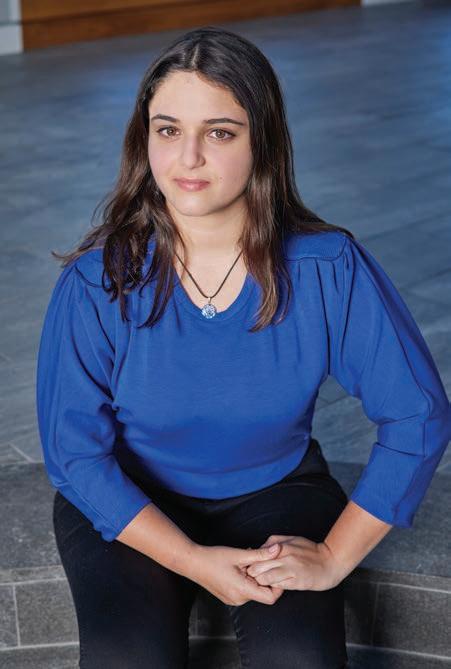
Gokcigdem’s eyes were opened in the classroom, too, especially the sustainability-related courses that introduced her to systems thinking, a holistic way of looking at the interconnectedness of the world. “Being able to map everything I was
witnessing and put it on paper and develop ideas off of—that was eyeopening,” she says. “I don’t think I would be able to advance my ideas to this level without those core classes.
“I want to do all I can to bring all the resources I’m getting from my education in the United States and bring it back, which I’m so proud to say that I am doing right now. What keeps me going is being able to see the change that I’m working on rsthand.”
— Eric Beato
From Portugal to Egypt to New York, Ela Gokcigdem ’24 has elevated her concerns in Turkey to international audiences.
PHOTO: MARK MANNE
40 BABSON MAGAZINE / SPRING 2023 ENTREPRENEURIAL LEADERSHIPIN ACTION
Q&A WITH ELA GOKCIGDEM: bab.sn/ElaQA
A look at entrepreneurial leaders shaped by their Babson College experience.
babson.edu/ptprograms Apply today! Fuel your entrepreneurial spirit Are you a Babson alum? Take advantage of a 20% Lifelong Learners grant applicable toward all Babson graduate programs. with Part-Time Graduate Programs for working professionals Part-Time Flex MBA Part-Time Online MBA Part-Time Certificate in Advanced Management In person with hybrid flexibility A fully virtual experience Customized to fit your career goals








September 13, 2023 Join us for Make Your Mark, our annual giving day that supports campus programs, scholarships, and more. Learn more at babson.edu/MakeYourMark BACK TO BABSON 2023 Together Under the Tent Head to campus September 22–23 to enjoy a favorite College tradition that brings alumni, students, parents, faculty/staff, and friends “Together Under the Tent” for Reunion, Homecoming, and Family Weekend. Watch for details at babson.edu/BackToBabson
DAY
Park, MA 02457-0310
BABSON
OF GIVING Babson

























































































 PhD
PhD









 John Crawford
John Crawford













































 — Wendy Murphy, professor of management and associate dean of the Undergraduate School
— Wendy Murphy, professor of management and associate dean of the Undergraduate School






 Vikki Rodgers, professor of ecology
Mary Pinard, professor of English
In Food Systems: Feeding the Modern United States, students conduct an experiment testing two soil samples to see how well they retain nutrients. One sample is rich soil that’s representative of regenerative farming techniques, while the other is less healthy soil indicative of industrialized farming.
Vikki Rodgers, professor of ecology
Mary Pinard, professor of English
In Food Systems: Feeding the Modern United States, students conduct an experiment testing two soil samples to see how well they retain nutrients. One sample is rich soil that’s representative of regenerative farming techniques, while the other is less healthy soil indicative of industrialized farming.

 PHOTO: JAKE BELCHER
PHOTO: JAKE BELCHER



 PHOTO: MICHAEL QUIET
PHOTO: MICHAEL QUIET







 PHOTO: MICHAEL QUIET
PHOTO: MICHAEL QUIET























 Megan McGovern ’05 (center) is the founder and lead organizer of SORT, a company that offers professional organization services. McGovern recently appeared on NBC10 Boston during a segment about how to clear clutter and stay organized throughout the year.
Priyanka Chanchani ’09 won a Rising Star award during the Women in Derivatives Annual Gala on September 21 in New York. The award was for her work as head of the North American exchange team for Bloomberg.
Howard Brown ’88 led a group of Babson alumni and friends who planted two trees last fall in Detroit on Ellen Solomita Day of Service in honor of Ellen Solomita ’89. Pictured, from left: Rayshawn Whitford ’12, Karin (Dietz) Gearhart ’09 (with son NJ), Brown, Acheampong “Nicholas” Johnson MS’22, and Alan Bakst. Brown also published his memoir, Shining Brightly, including his experience as a former Babson trustee and president of the Babson Alumni Association, as well as a two-time Stage IV cancer survivor.
Megan McGovern ’05 (center) is the founder and lead organizer of SORT, a company that offers professional organization services. McGovern recently appeared on NBC10 Boston during a segment about how to clear clutter and stay organized throughout the year.
Priyanka Chanchani ’09 won a Rising Star award during the Women in Derivatives Annual Gala on September 21 in New York. The award was for her work as head of the North American exchange team for Bloomberg.
Howard Brown ’88 led a group of Babson alumni and friends who planted two trees last fall in Detroit on Ellen Solomita Day of Service in honor of Ellen Solomita ’89. Pictured, from left: Rayshawn Whitford ’12, Karin (Dietz) Gearhart ’09 (with son NJ), Brown, Acheampong “Nicholas” Johnson MS’22, and Alan Bakst. Brown also published his memoir, Shining Brightly, including his experience as a former Babson trustee and president of the Babson Alumni Association, as well as a two-time Stage IV cancer survivor.

 Miguel Vázquez Jr. ’12 married Angela Grace Colantonio on September 3 in Hartford, Connecticut. His longtime friends and fellow alumni Amy Mon Park ’12 and Martika Jenkins ’12 attended the ceremony and celebration.
Miguel Vázquez Jr. ’12 married Angela Grace Colantonio on September 3 in Hartford, Connecticut. His longtime friends and fellow alumni Amy Mon Park ’12 and Martika Jenkins ’12 attended the ceremony and celebration.

 during
during
























